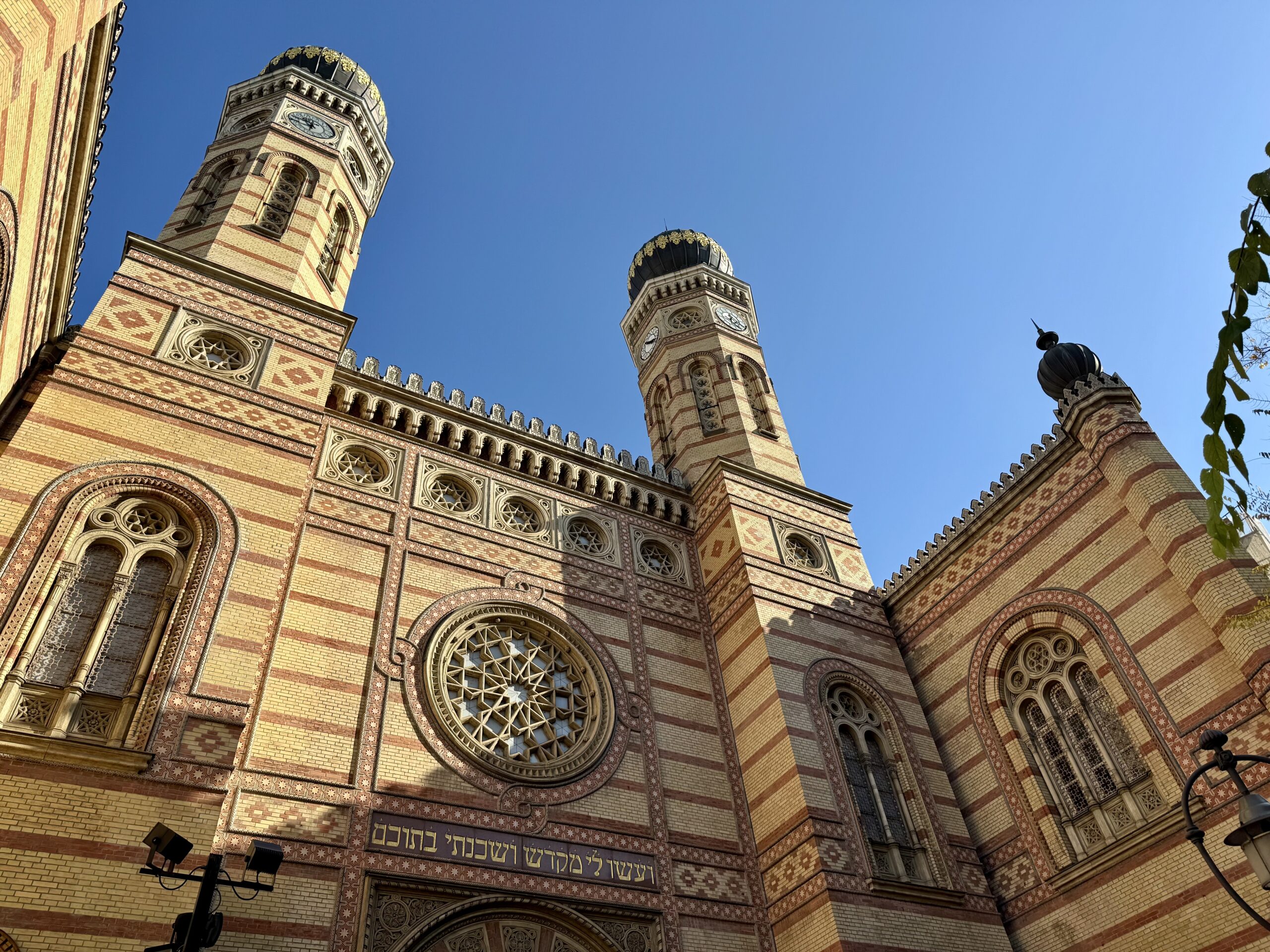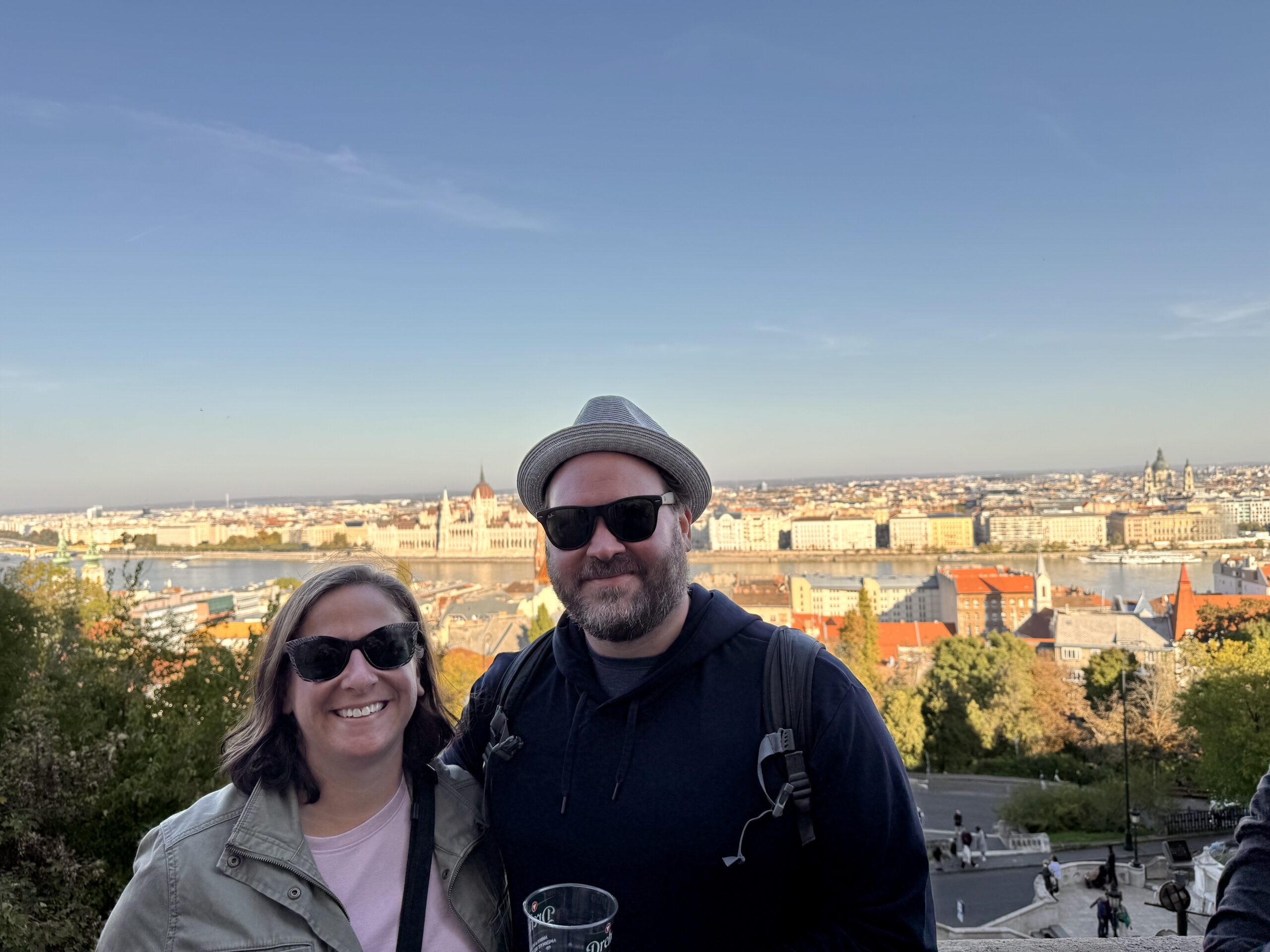Before arriving to Budapest, I had very little knowledge of its history. After spending four days there, I learned so much about Budapest’s culture, especially its Jewish history. Read on to see how the city thrives now considering its pain and trauma from World War II.
The Jewish Quarter
Nik and I were staying at a hotel right on the edge of Budapest’s Jewish Quarter. From the moment we arrived and started walking, there were remnants of what was once Budapest’s Jewish community.
The Ghetto Wall
By 1930 there were around 200,000 jews living in Budapest, mostly in the Jewish Quarter. It wasn’t until November 1944, during World Ward II, that the Nazi occupation in Budapest led to the creation of the Budapest ghetto. The ghetto’s walls enclosed an area, less than a mile squared, within Budapest’s Jewish Quarter. High fencing made it impossible to come and go, closing people off from the rest of the city.
Today there are sidewalk markers where the walls of the ghetto once stood.
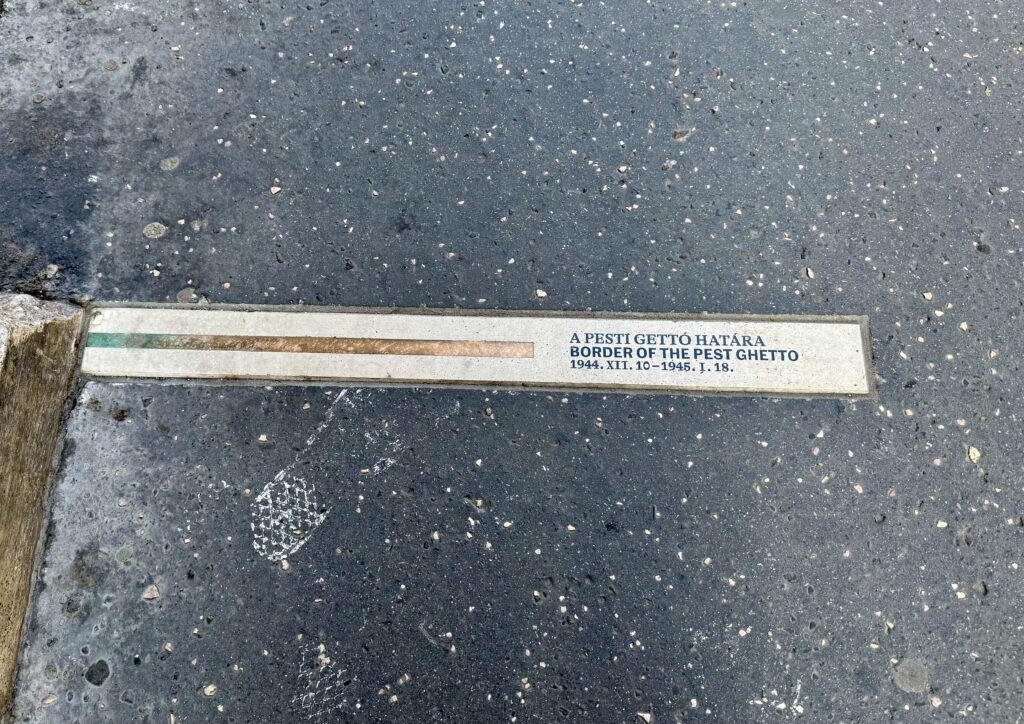
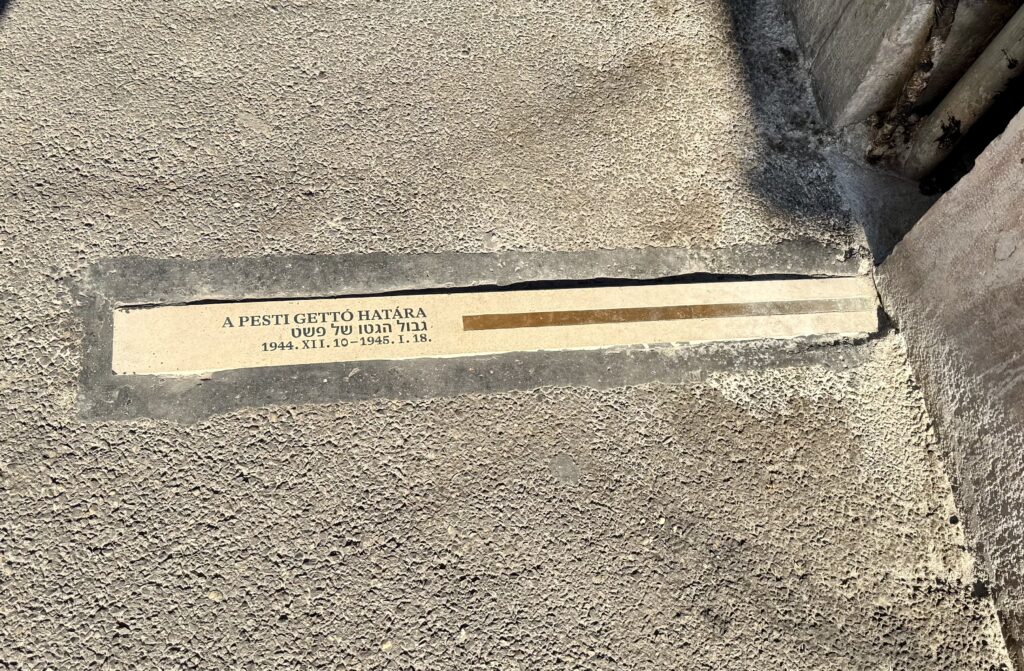
From the occupation to liberation, the Jewish population of Budapest was reduced from 200,000 to 70,000 in the ghetto. You would think the ghetto lasted years, but in reality, it lasted for less than two months, until the liberation of Budapest by the Soviet Army in January 1945.
In the courtyard of a private building, which was open when we walked to it, stood the last remaining part of a wall surrounding the Budapest ghetto.
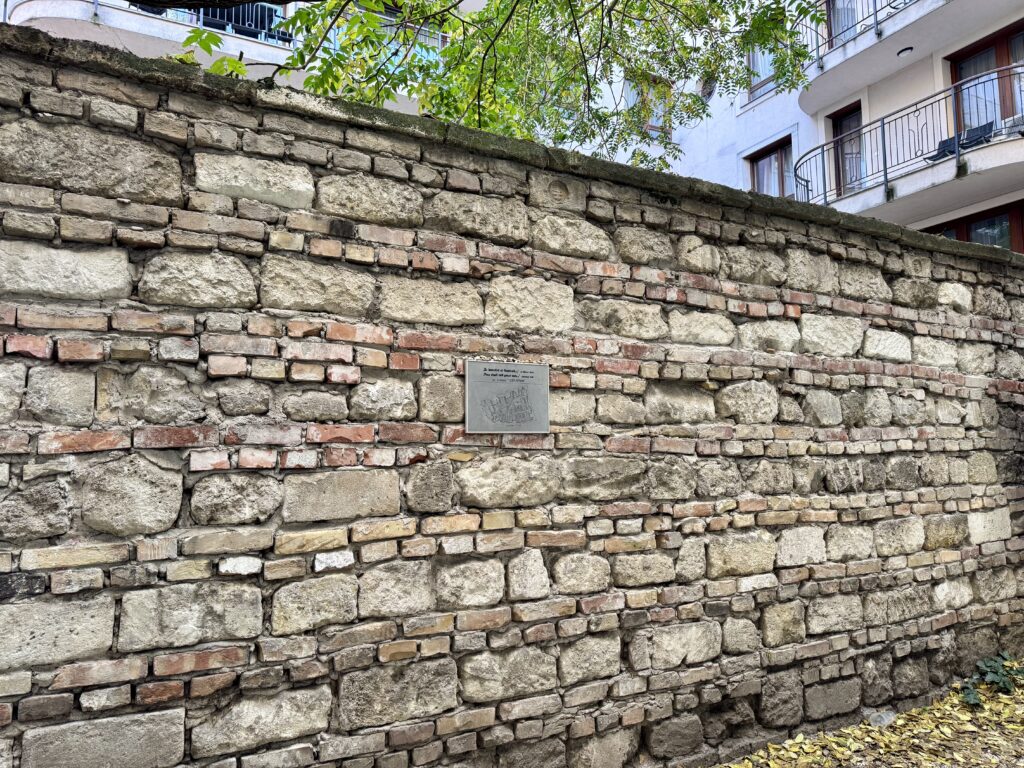
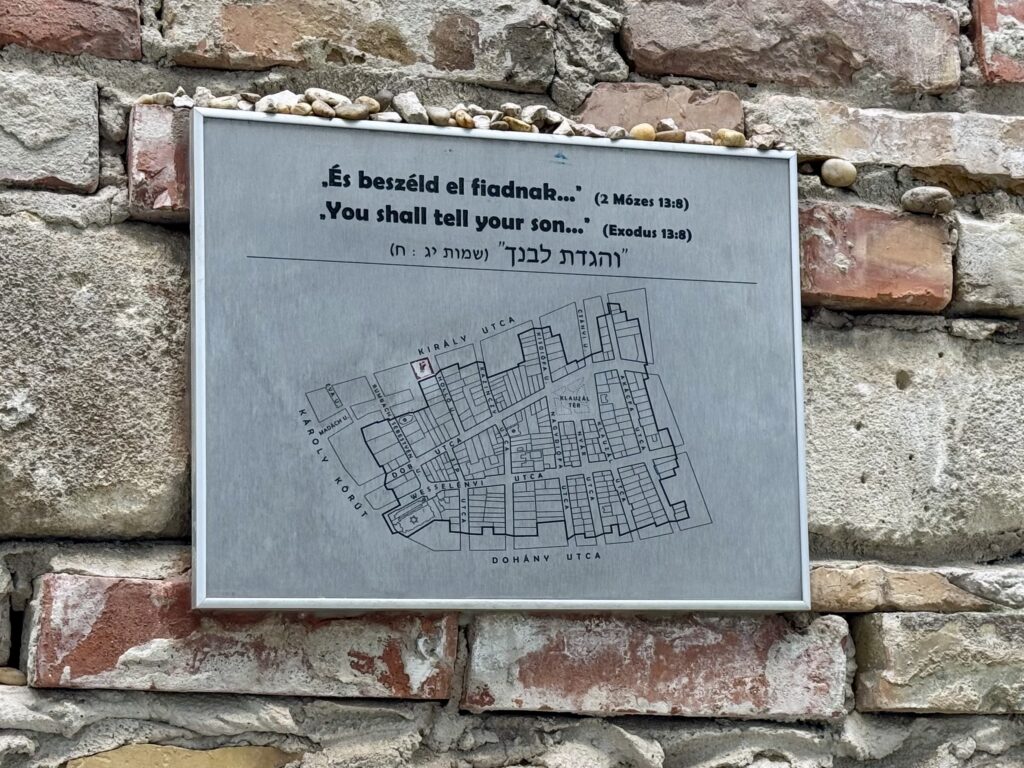
Unfortunately the original wall was destroyed in 2006 and a new one was built in 2010 to replace it. While not entirely authentic, this memorial wall stands for those who did not survive to experience the liberation.
Ghetto Wall Memorial
Another memorial where the Ghetto wall once stood is incredibly moving. The Ghetto Wall Memorial is built to look like rusting steel. There are religious verses and a summary of both past and present Jewish life in Budapest in Hungarian, English, and Hebrew on part of the wall. It not only recalls the Holocaust but mentions the revival of Jewish life in the neighborhood.
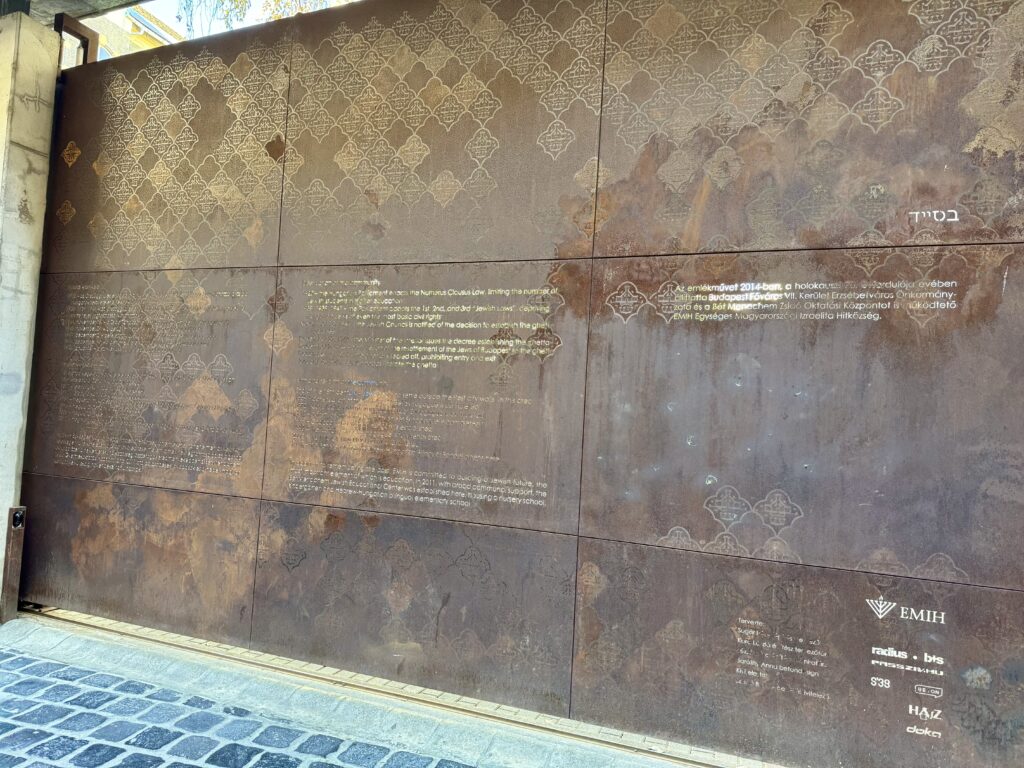
A map is carved into the concrete showing the outline of the ghetto, marking some of its most important institutions. The map has small round openings, reminiscent of bullet holes across its surface. Looking through these allows you to see historical scenes from the neighborhood.
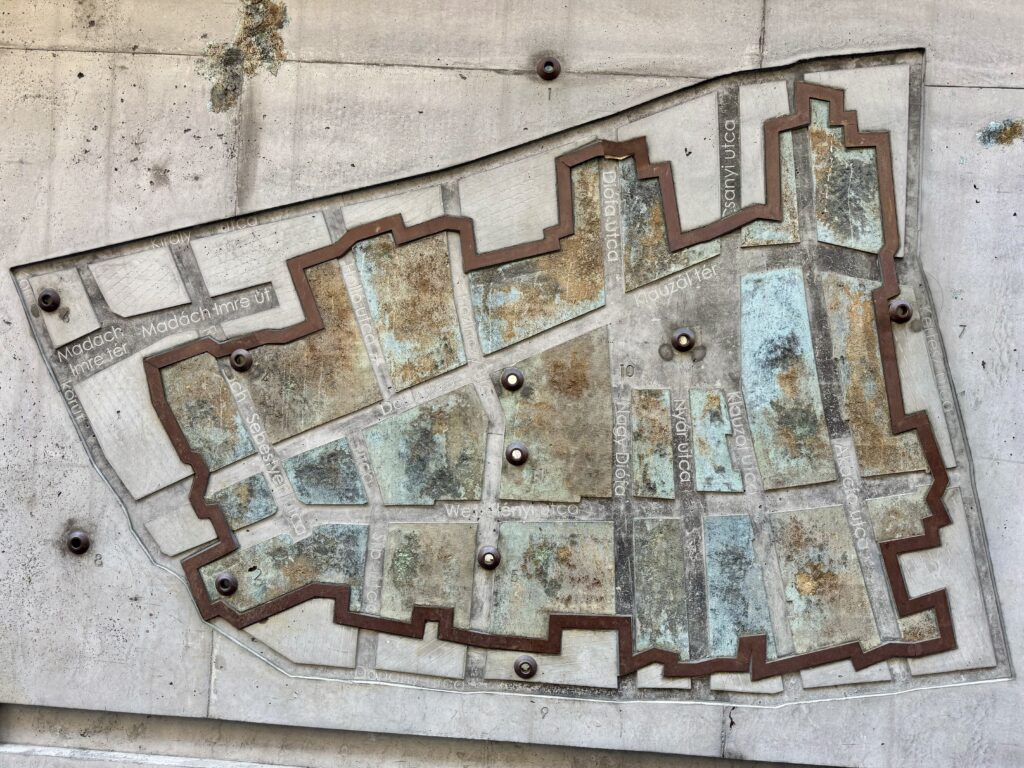
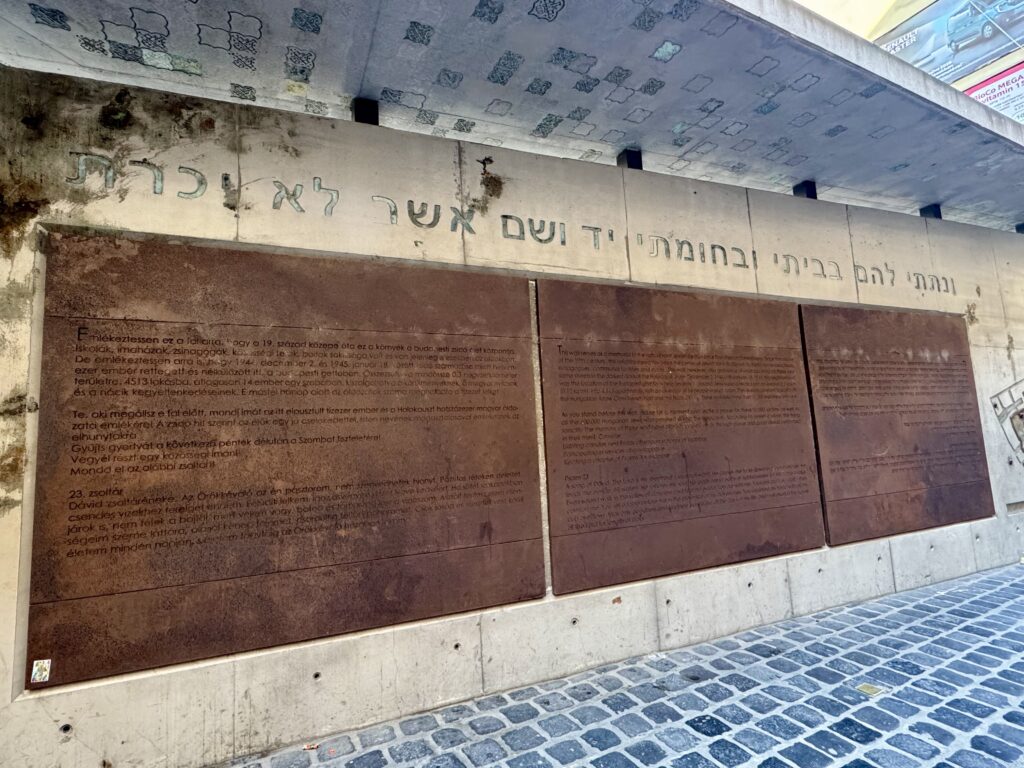
Our visit overlapped with the Jewish holiday of Sukkot and walking one night, I happened to look up and noticed a Sukkah on an apartment balcony.
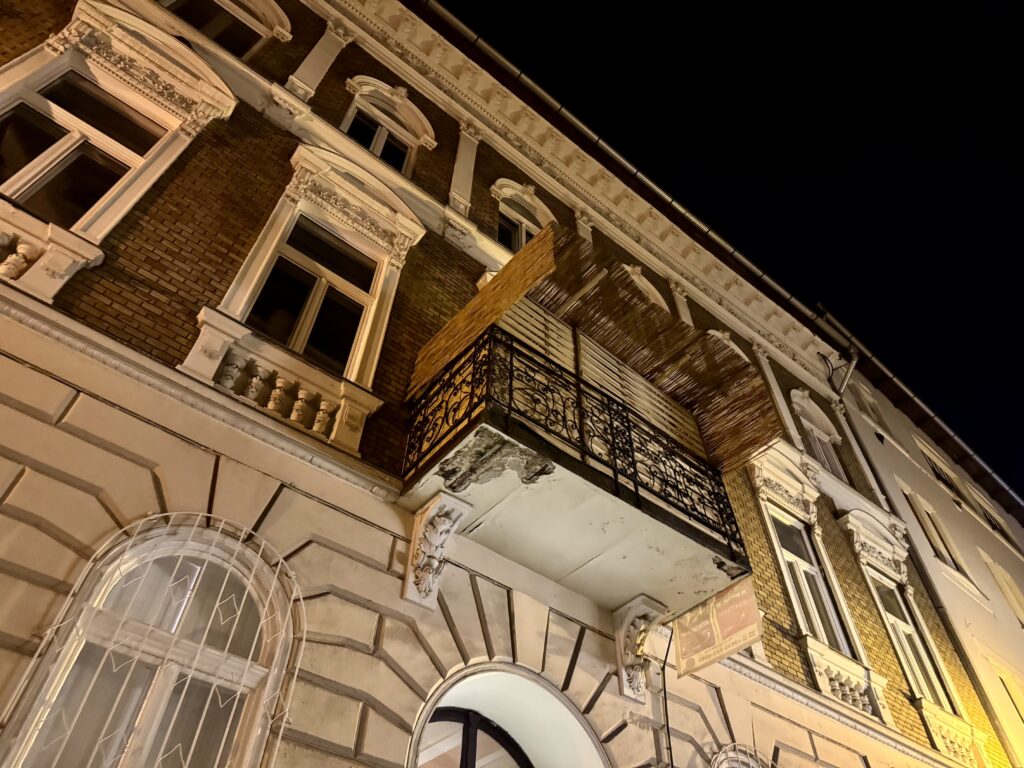
Along with several Jewish stores, this is one of several examples of how the Jewish community has been revived and continues to live on in Budapest.
Related: Some of the Best Food in Budapest
Shoes on Danube Bank
The local Arrow Cross Party, a far-right Hungarian party modeled on the Nazi Party, murdered over 10,000 Jews in Hungary. Hundreds of them were forced to remove their shoes and were shot into the Danube River so they washed away. (The shoes were valuable and could be resold.)
The Shoes on the Danube Bank memorial gives remembrance to the 3,500 people, 800 of them Jews, who were shot into the Danube during the time of the Arrow Cross terror.
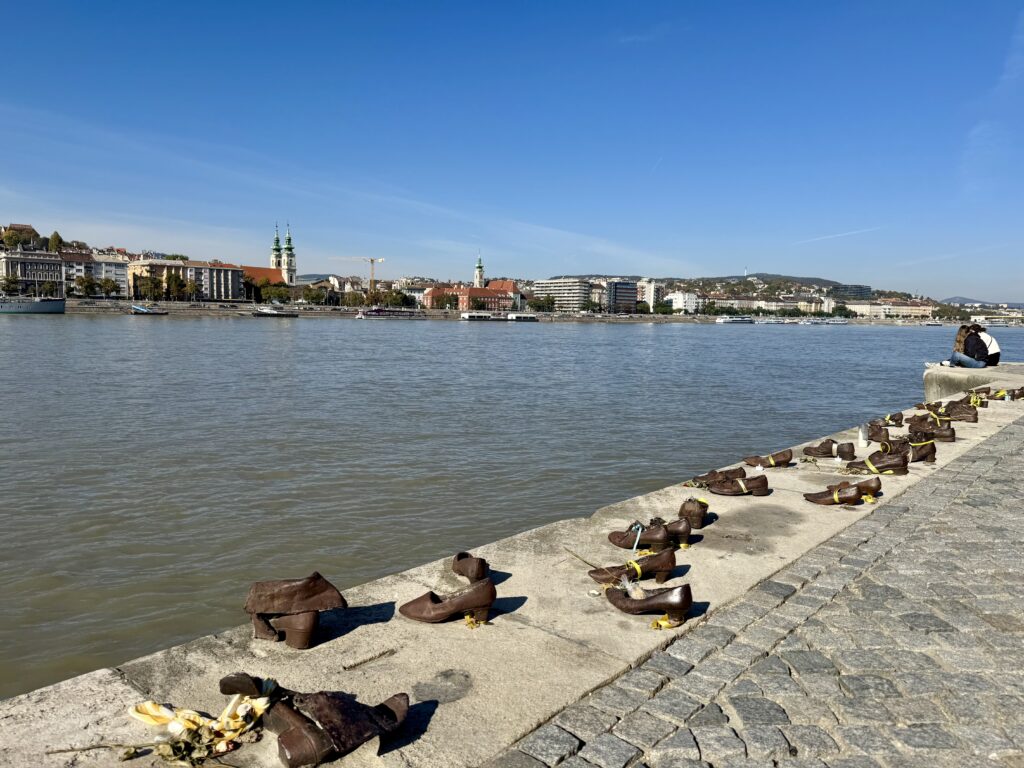
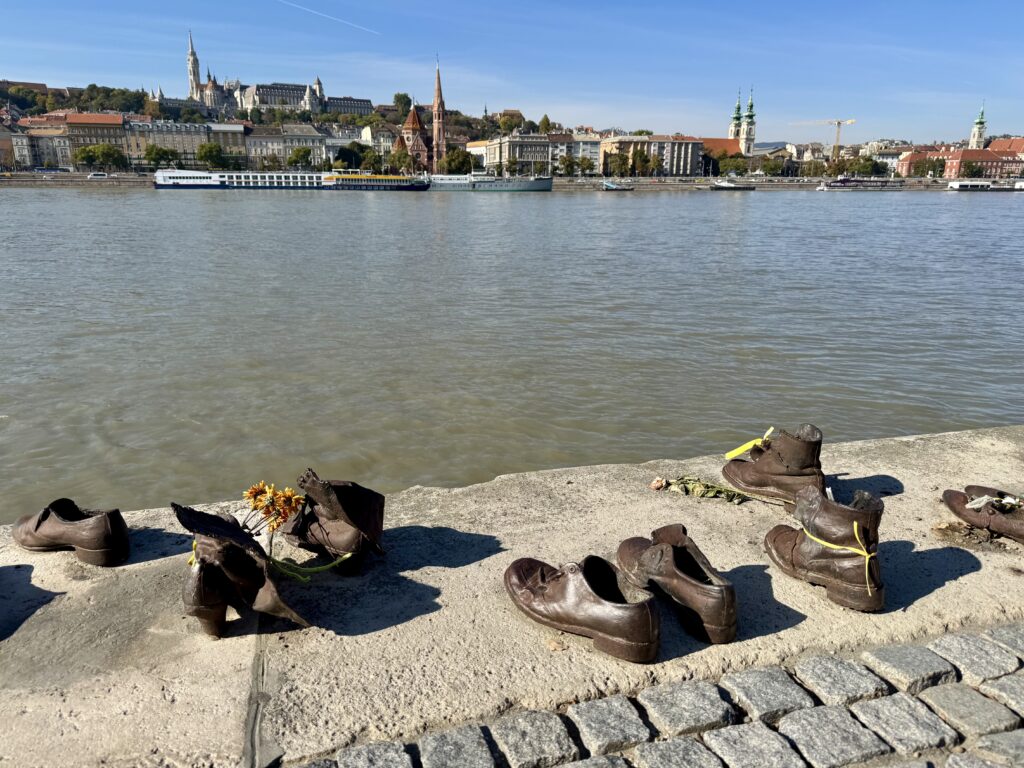
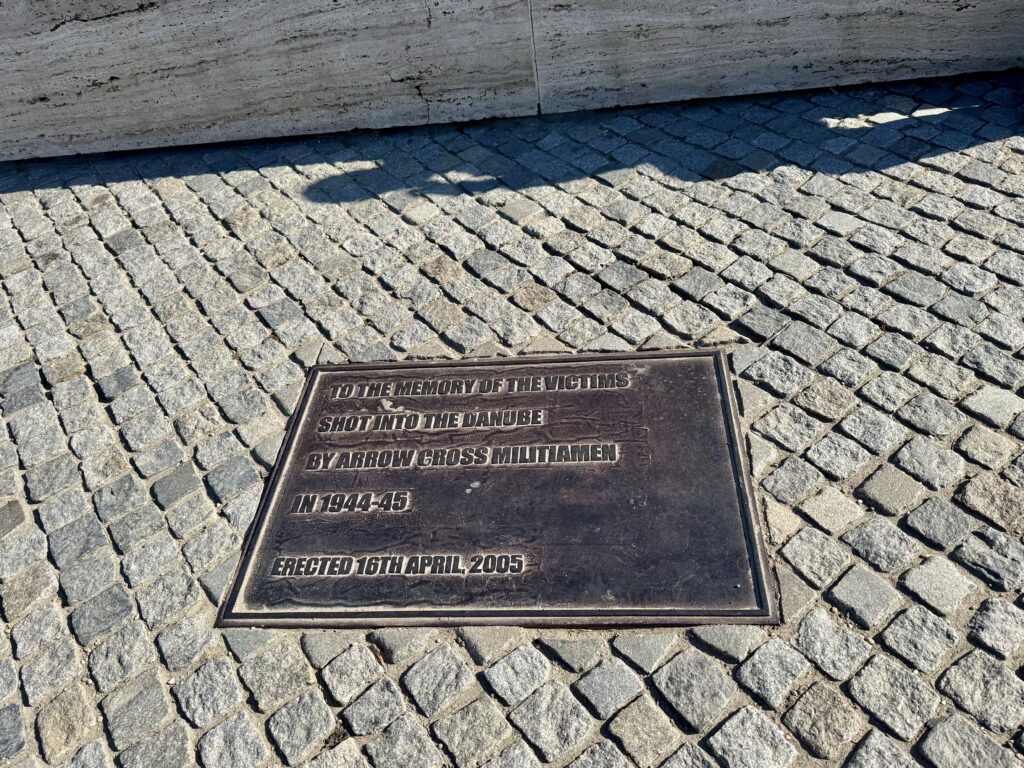
Dohány Street Synagogue
The Dohány Street Synagogue, also known as the Great Synagogue, is the largest synagogue in Europe and second largest in the world. At one time, the Synagogue formed part of the Budapest Ghetto border.
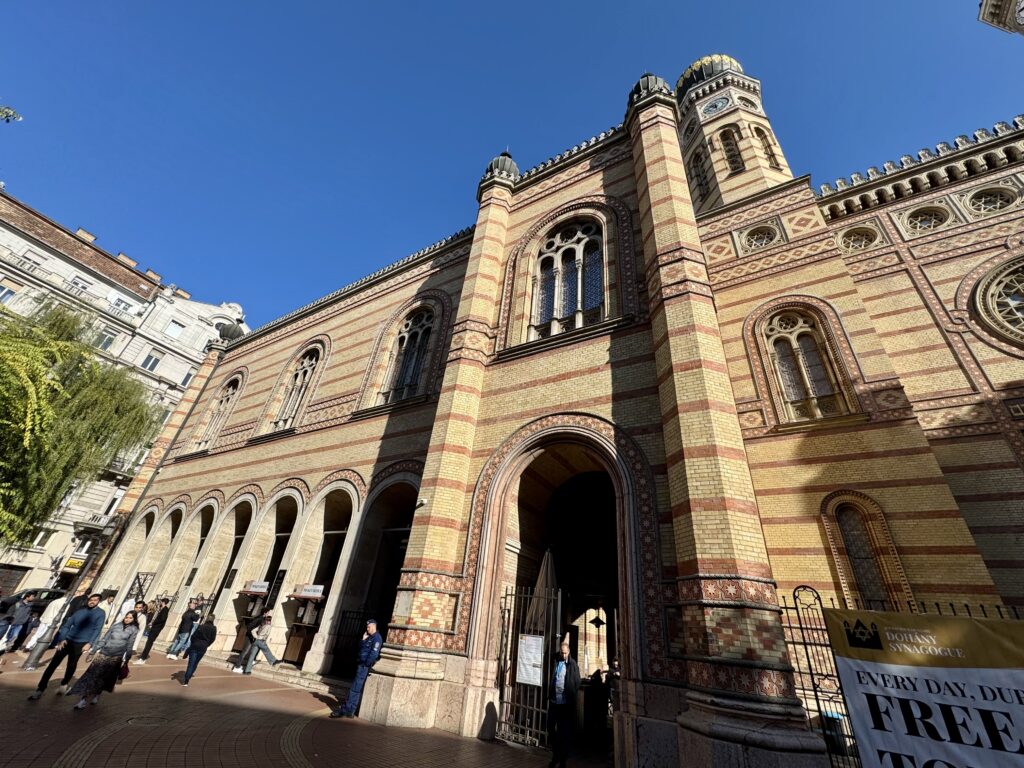
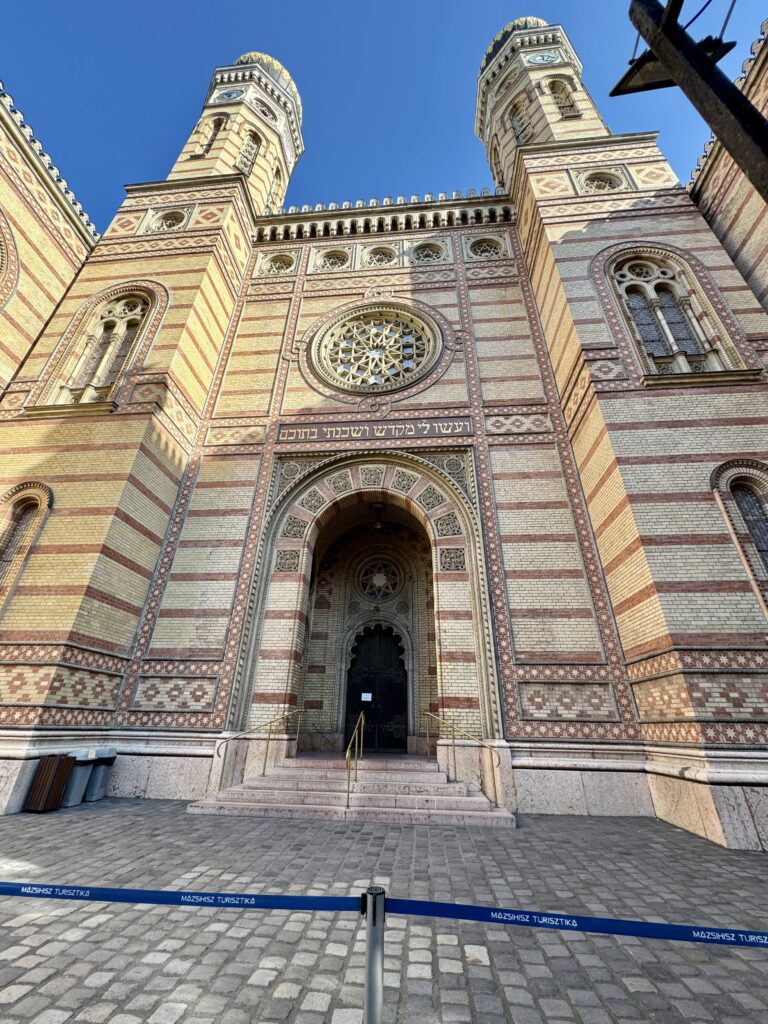
The Synagogue exterior is so grand, you can see it from various points in its vicinity. At both day and night, the Synagogue is stunningly beautiful.
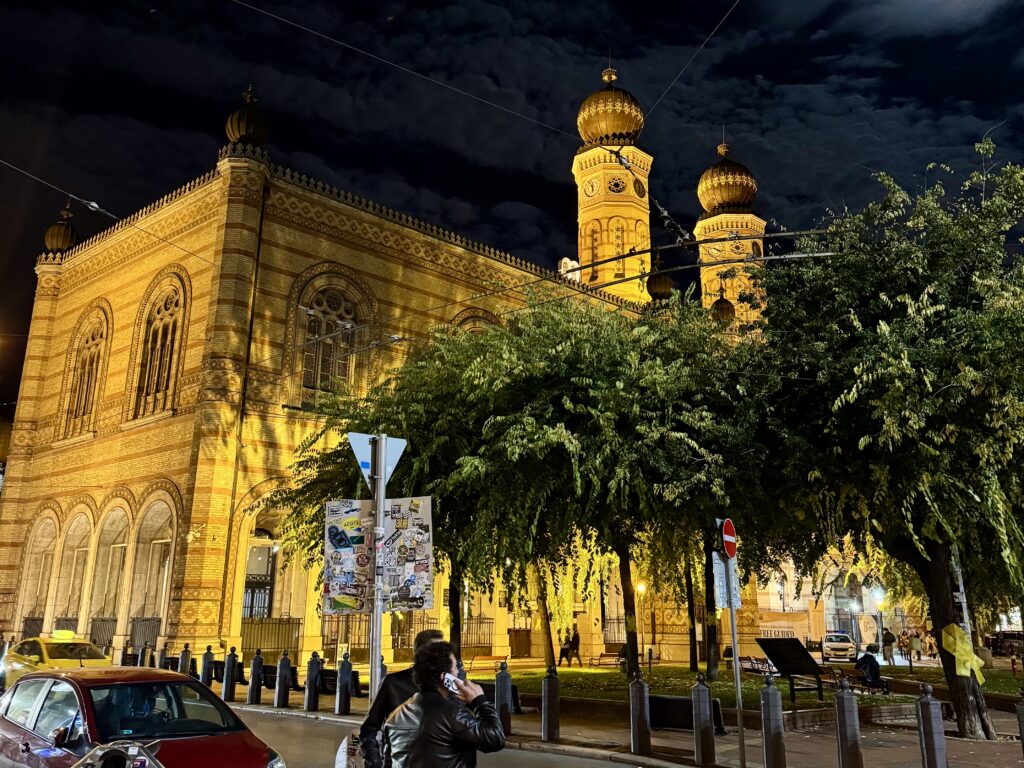
Once inside the Synagogue, it’s even more gorgeous. The price of admission (roughly $30) is worth it. We walked in and sat for a few minutes catching the end of a tour. Pictures do not do the interior justice.
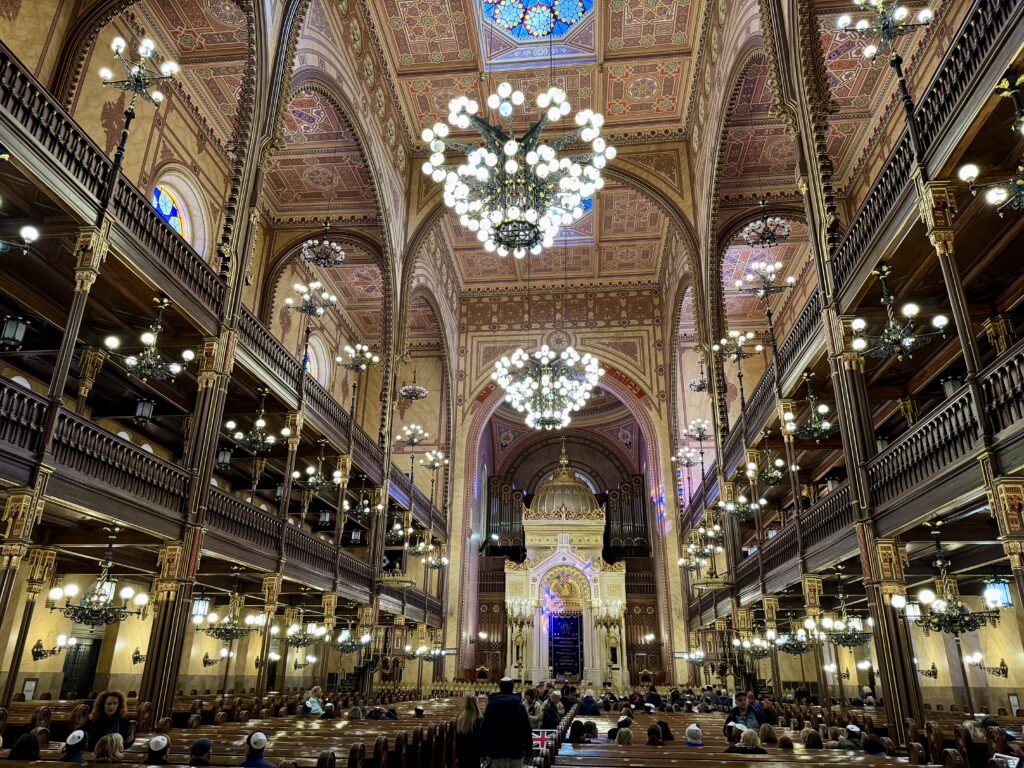
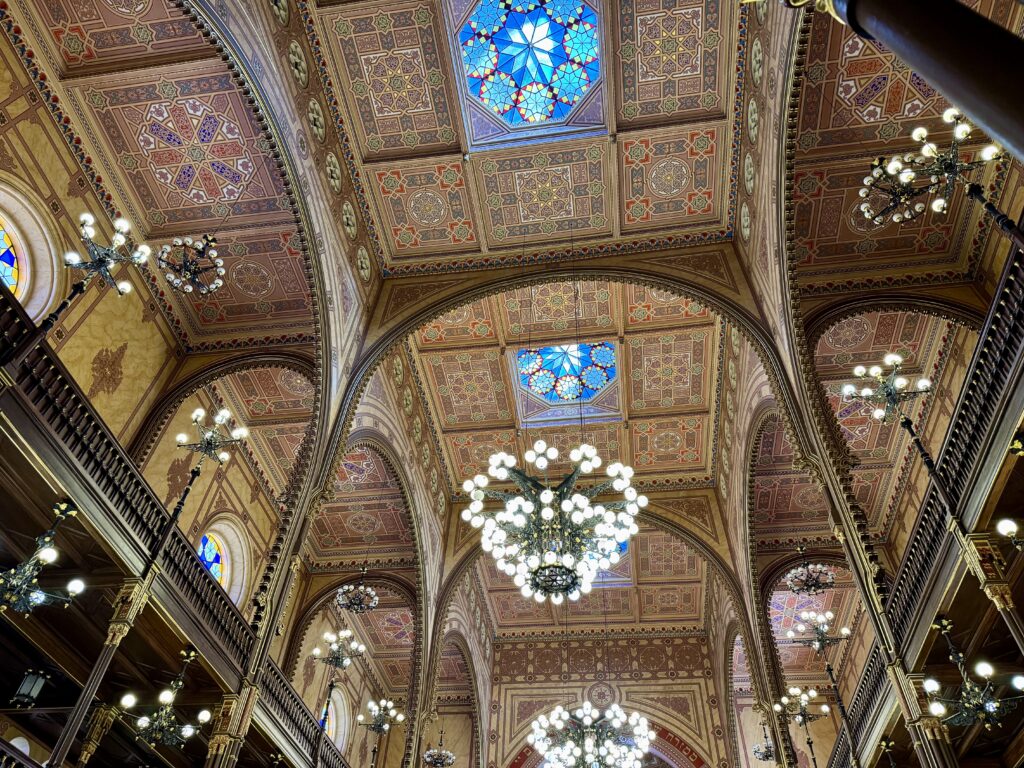
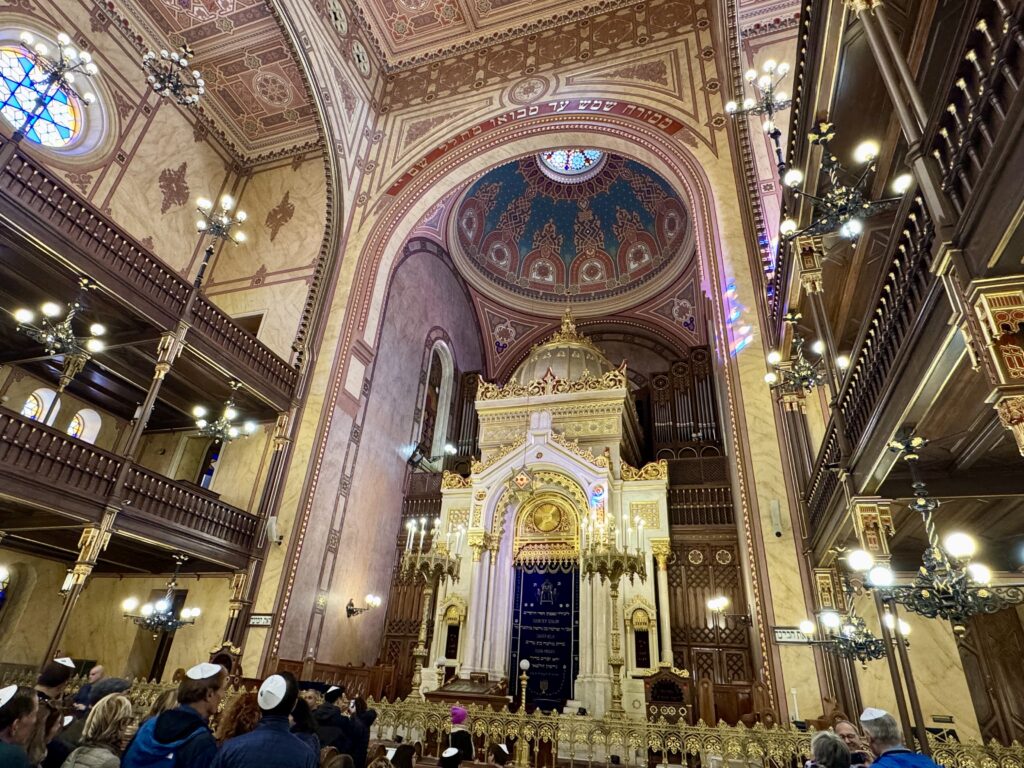
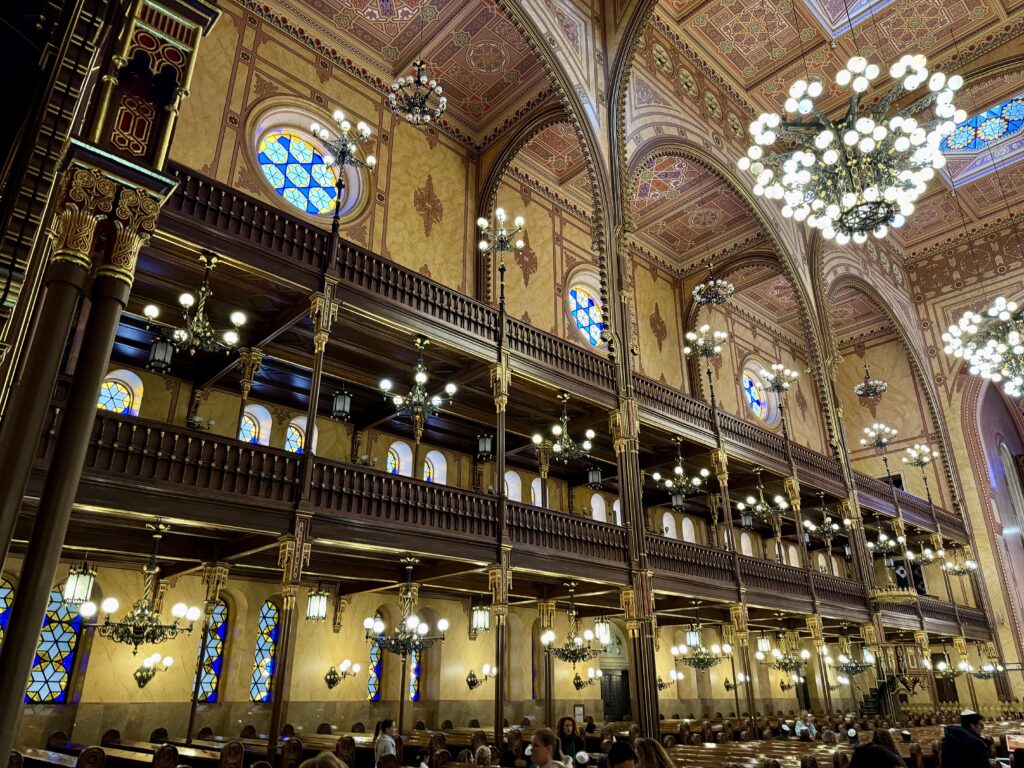
Of interesting note, Estée Lauder and Tony Curtis, both of whom are Jewish, contributed large amounts of money to the renovation of the Synagogue in the 1990s.
The Cemetery
As you head to walk the grounds of the Synagogue, the memory of the Holocaust is seen and felt everywhere. You first see the cemetery, which is unusual, because in Judaism you rarely have a cemetery near a Synagogue.
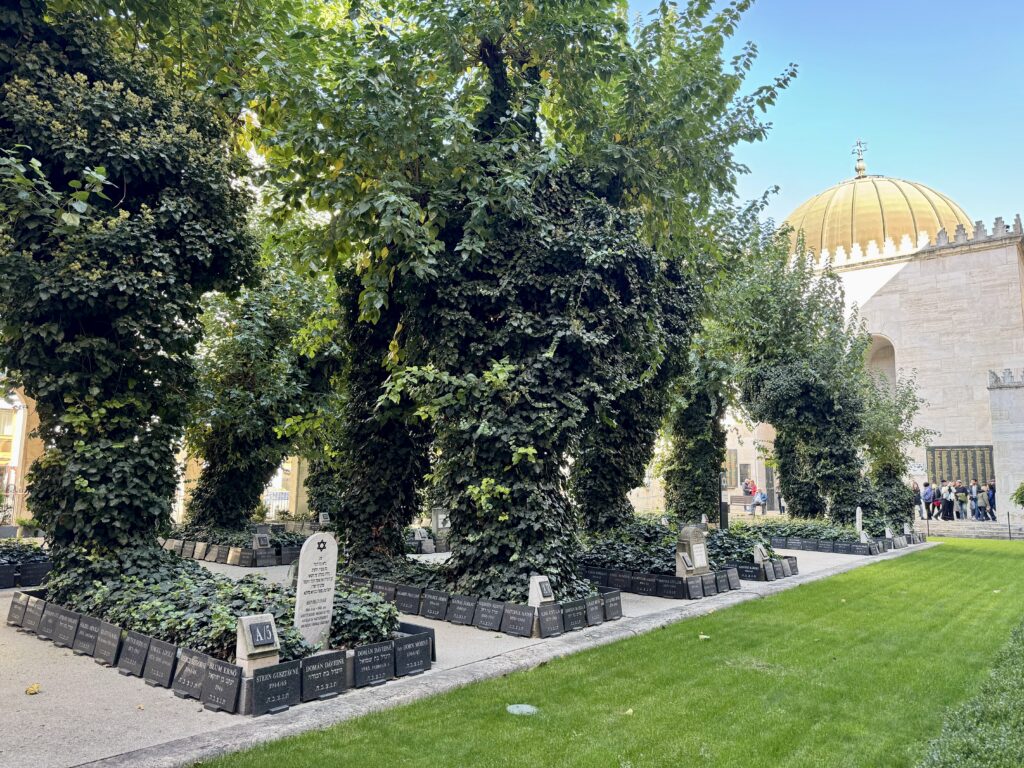
This cemetery was created out of necessity following the liberation of the Budapest Ghetto. Thousands of unburied corpses were lying in the streets and it was decided they’d be buried together in common graves. Today there is a lush garden among various headstones to remember those who were murdered by the Nazis.
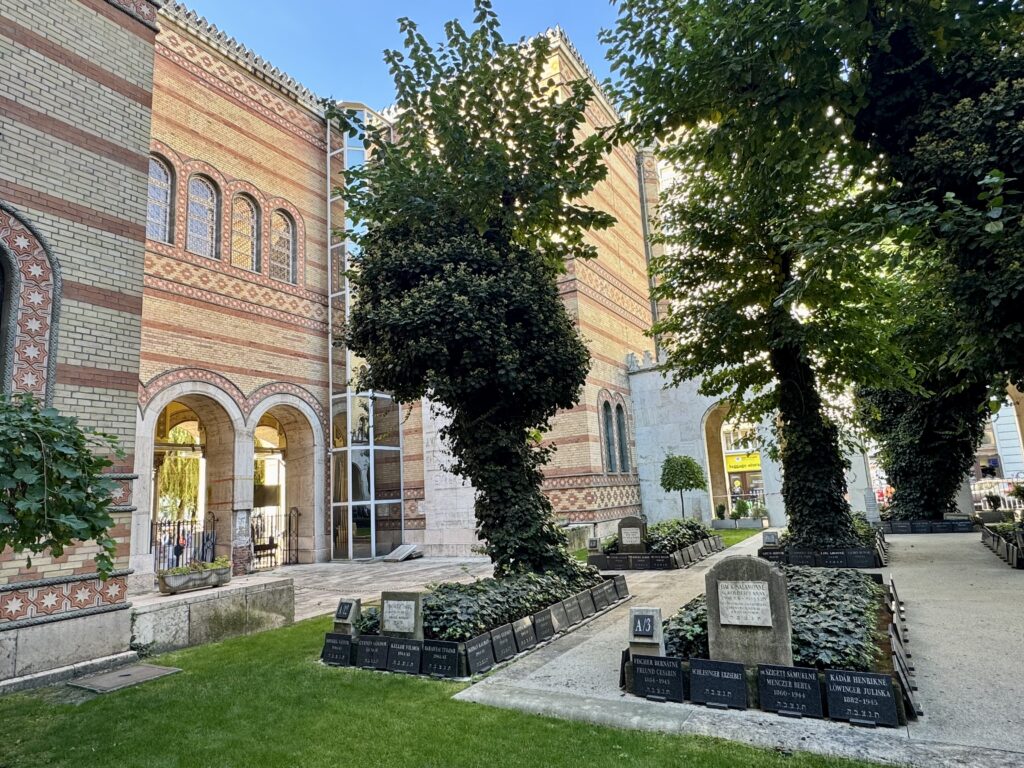
The Heroes’ Temple
Just beyond the cemetery is The Heroes’ Temple. A separate space built in 1931 commemorates the Hungarian Jewish soldiers who fought in World War I and died heroes’ deaths. Another beautiful space that is still in use today for religious services.
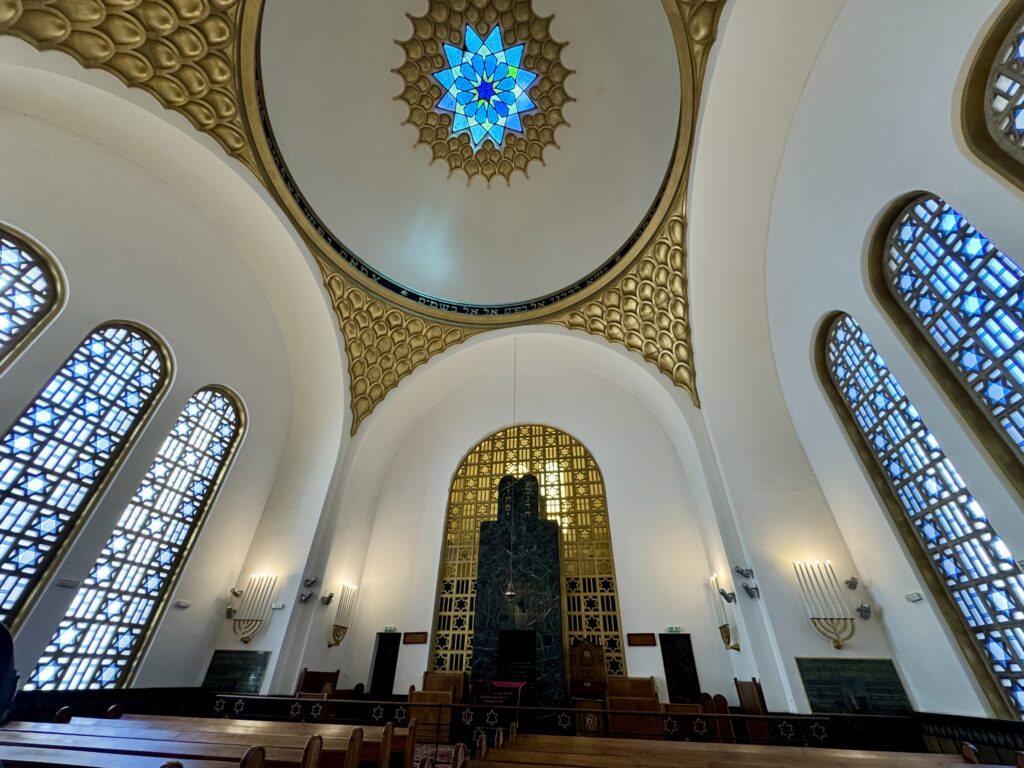
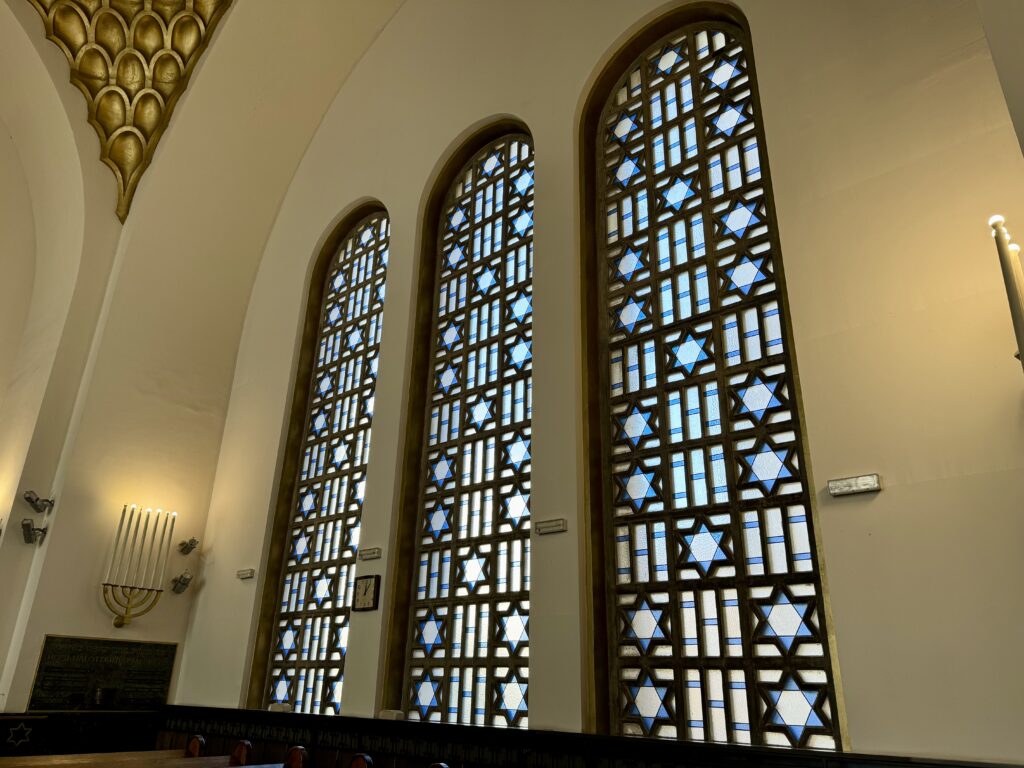
Raoul Wallenberg Holocaust Memorial Park
In the rear of the Synagogue courtyard is the Raoul Wallenberg Holocaust Memorial Park.
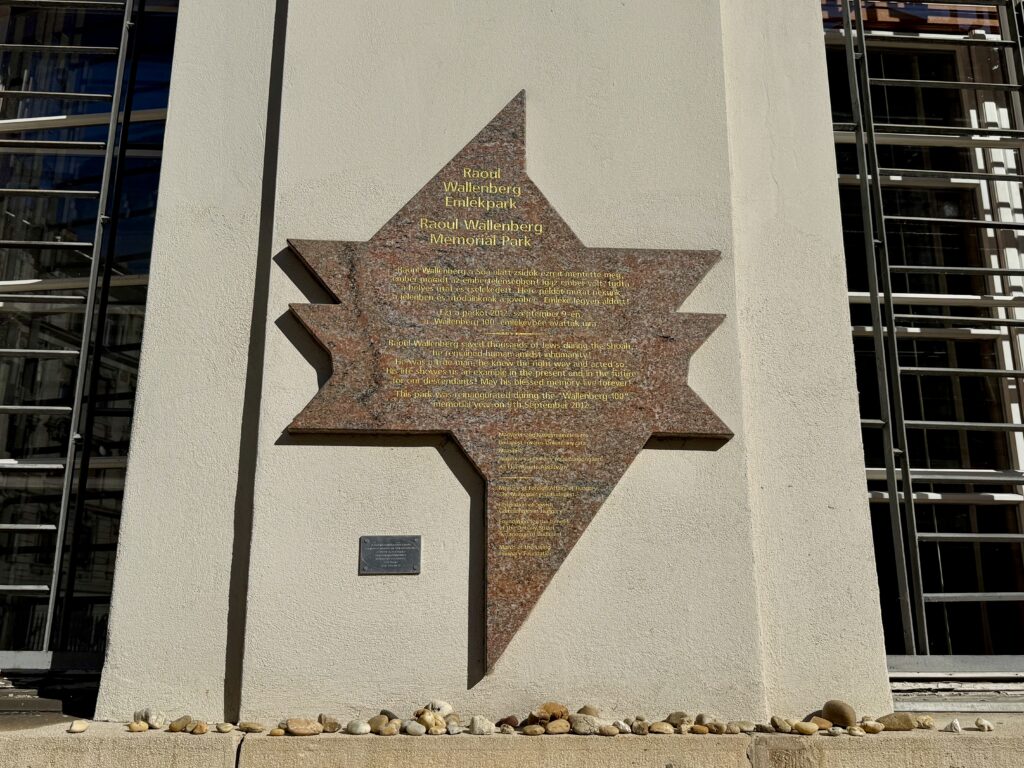
Wallenberg was a Swedish diplomat, serving as Sweden’s special envoy in Budapest between July and December 1944. While in that role, Wallenberg issued passports and sheltered Jews in buildings which he declared as Swedish territory.
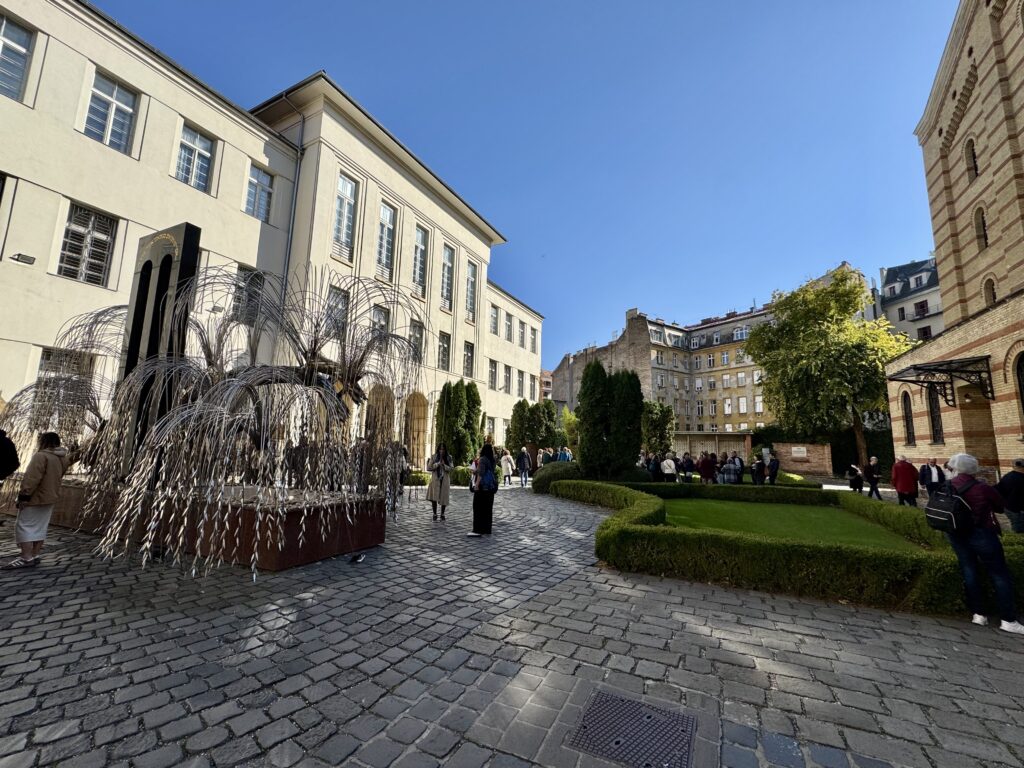
In 1945, Wallenberg mysteriously disappeared and there all sorts of theories about that and his presumed death, according to his Wikipedia.
Holocaust Tree of Life Memorial
Made by Imre Varga, who is regarded as one of Hungary’s most important artists, is the Holocaust Tree of Life Memorial. Resembling a weeping willow, the leaves bear inscriptions with names of Holocaust victims.
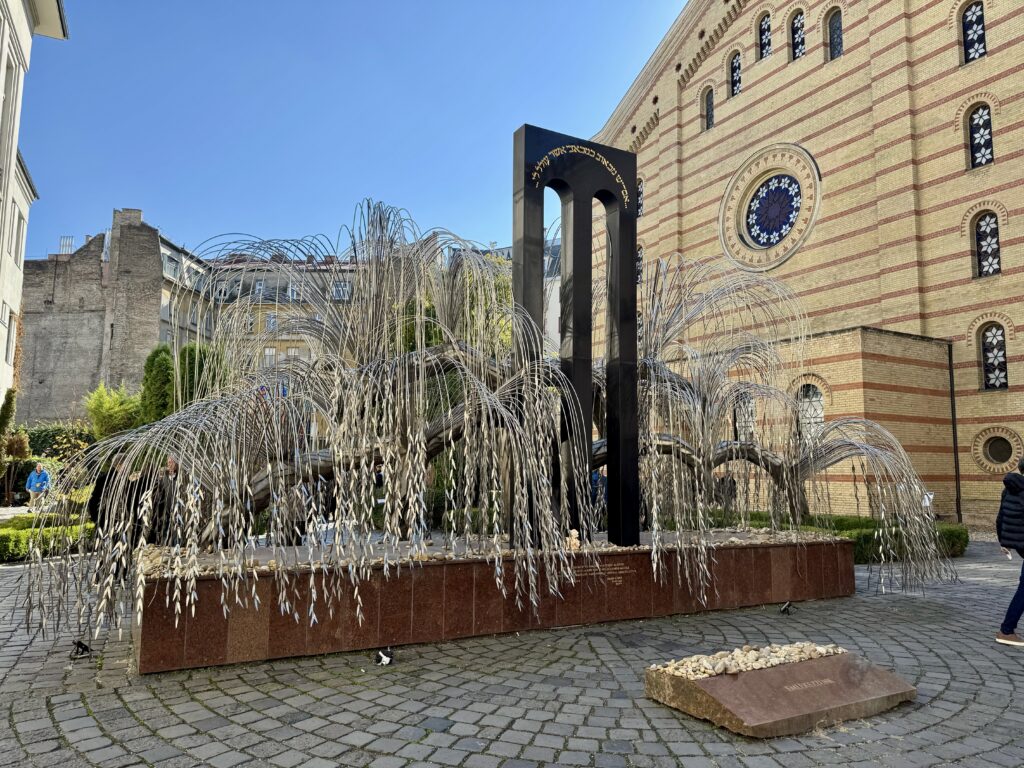
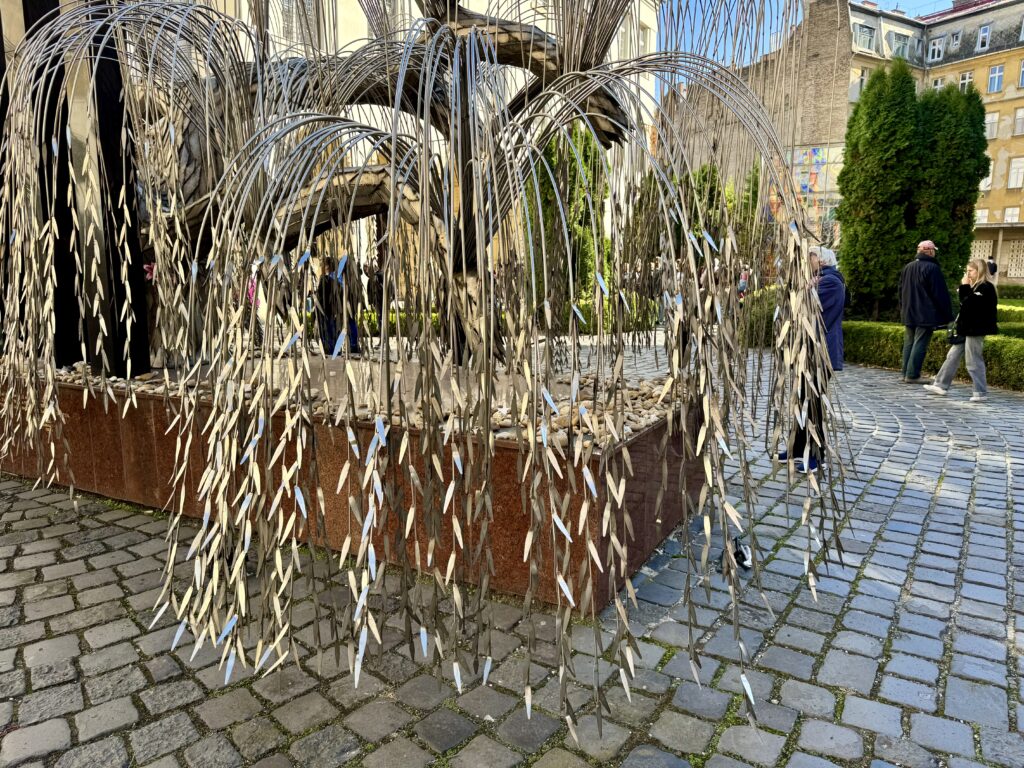

Sir Nicholas Winton Memorial Stone and Stained Glass Window
In 2015, a memorial plaque and stained glass window for British humanitarian Sir Nicholas Winton, was unveiled in the garden. Winton assisted in the rescue of 669 children from Czechoslovakia shortly before the start of World War II.
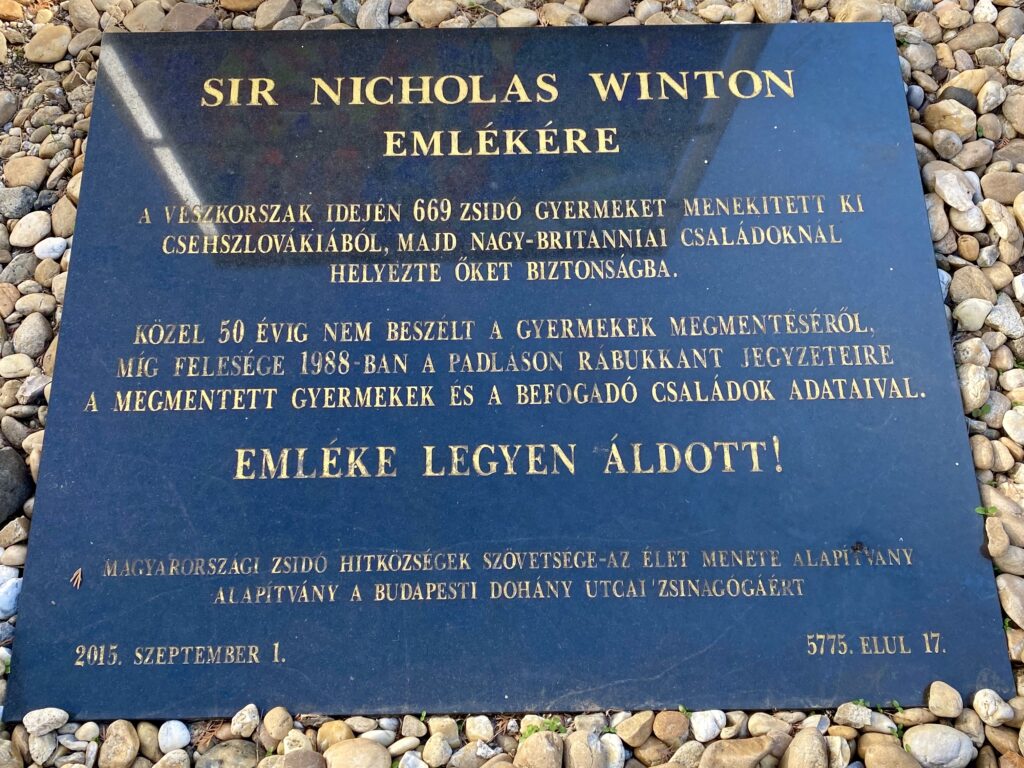
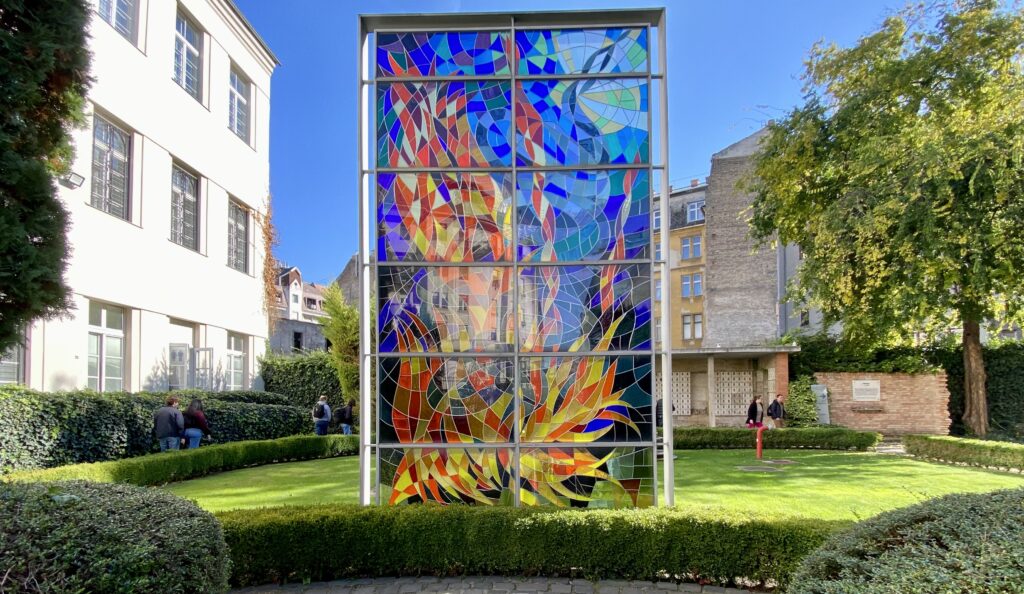
His humanitarian accomplishments remained unknown and unnoticed by the world for nearly 50 years until 1988 when he was invited to the BBC television program That’s Life!, where he was reunited with dozens of the children he had helped come to Britain and was introduced to many of their children and grandchildren.
His story is depicted in the film, One Life, starring Anthony Hopkins as Winton. I highly recommend a viewing and have some tissues handy.
Stumble Stones
As I’ve written about before, Stumble Stones are small cubes placed in sidewalks to memorialize victims of the Holocaust. They are usually placed at the last place that the person lived, worked or studied. There were a good handful of them in Budapest that we came upon, and for the number of deaths in the city, I was surprised there weren’t more.
As a reminder, the stones translate to some version of: Here lived / Name / Born / Deported or Murdered
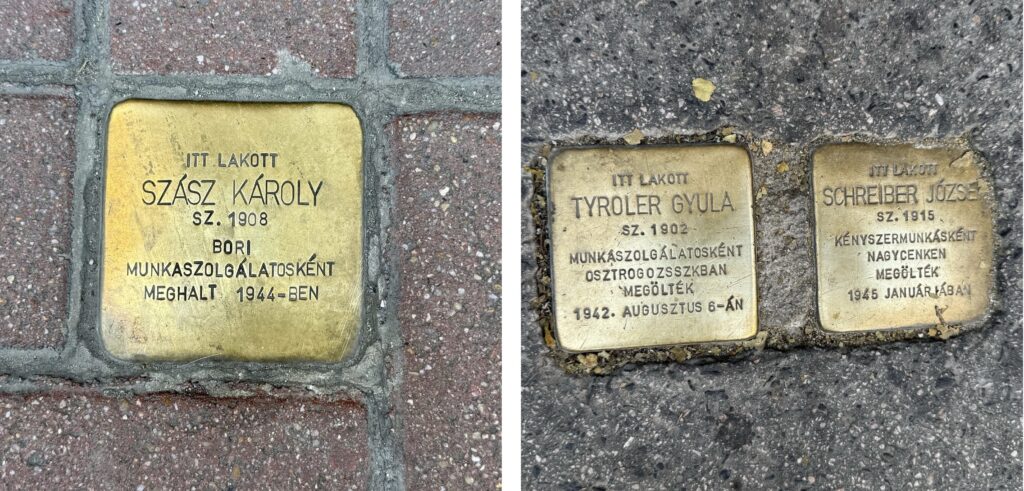
I like to look up the names I see on some Stumble Stones. It’s not always easy to find out about the person, but I did learn something new about the naming convention on the stones in Budapest.
Traditionally, when Hungarian women married they used their husband’s complete name and added the suffix -ne (meaning approximately “Mrs”) as seen here:
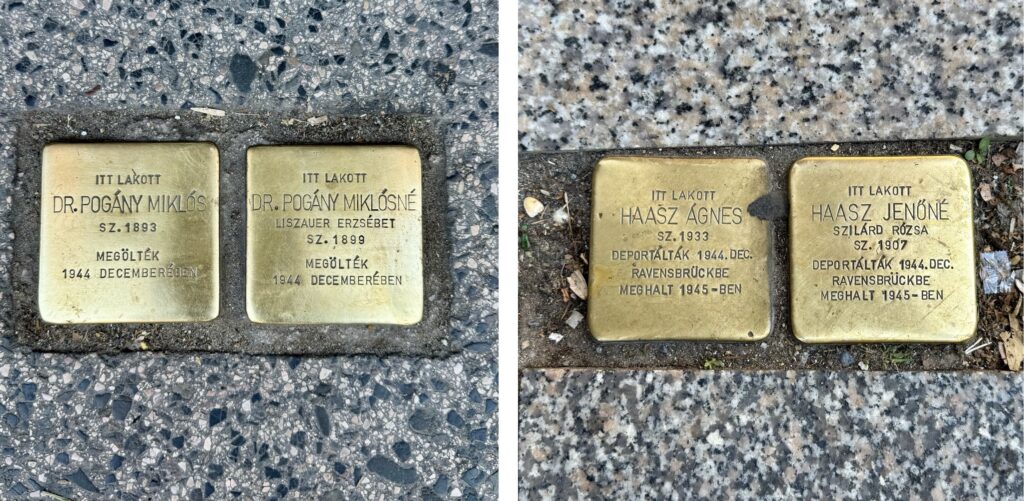
Carl Lutz Memorial
Carl Lutz, a Swiss diplomat, served as the Swiss Vice-Consul in Budapest from 1942 until the end of World War II. He is credited with saving over 62,000 Jews during the Second World War by creating safe houses in Budapest and issuing documents that enabled some to emigrate.
The bronze memorial honoring Lutz depicts him as a golden angel descending to rescue a fallen victim.
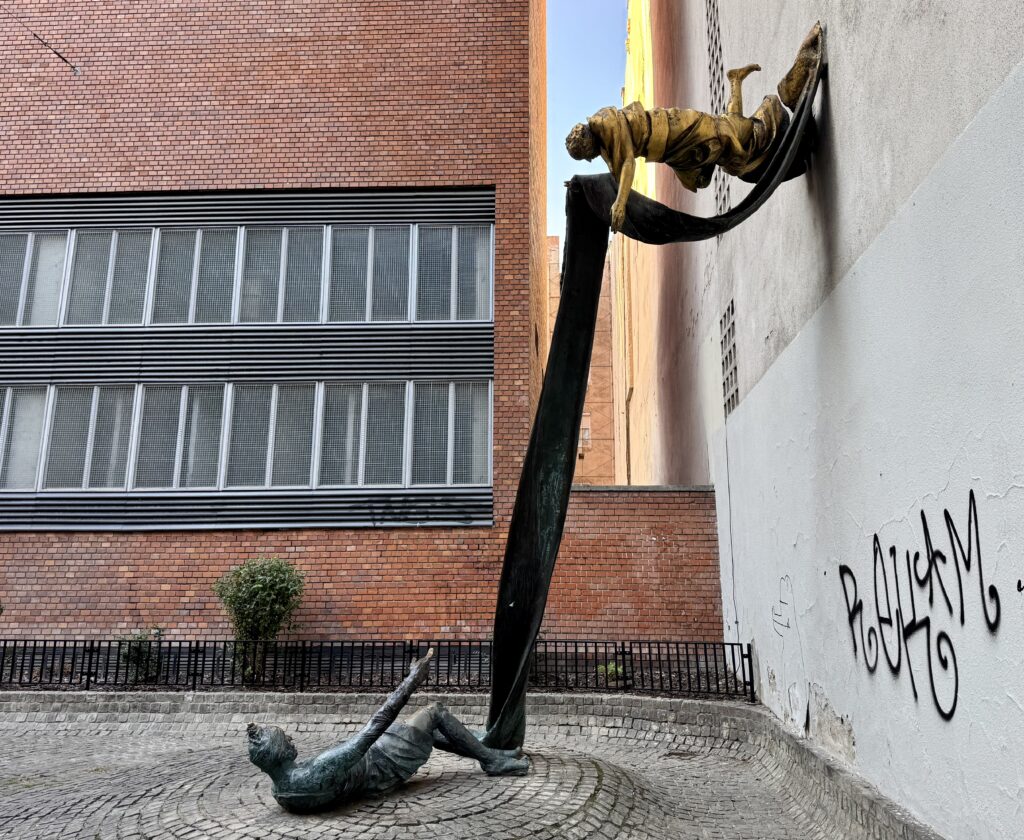
On a plaque to the side, a caption reads “Whoever saves a life is considered to have saved an entire world.”
Never Again
Budapest’s Jewish history is quite moving. I mean, the ghetto only lasted two months and there were so many deaths. And yet, the war was close to ending soon after.
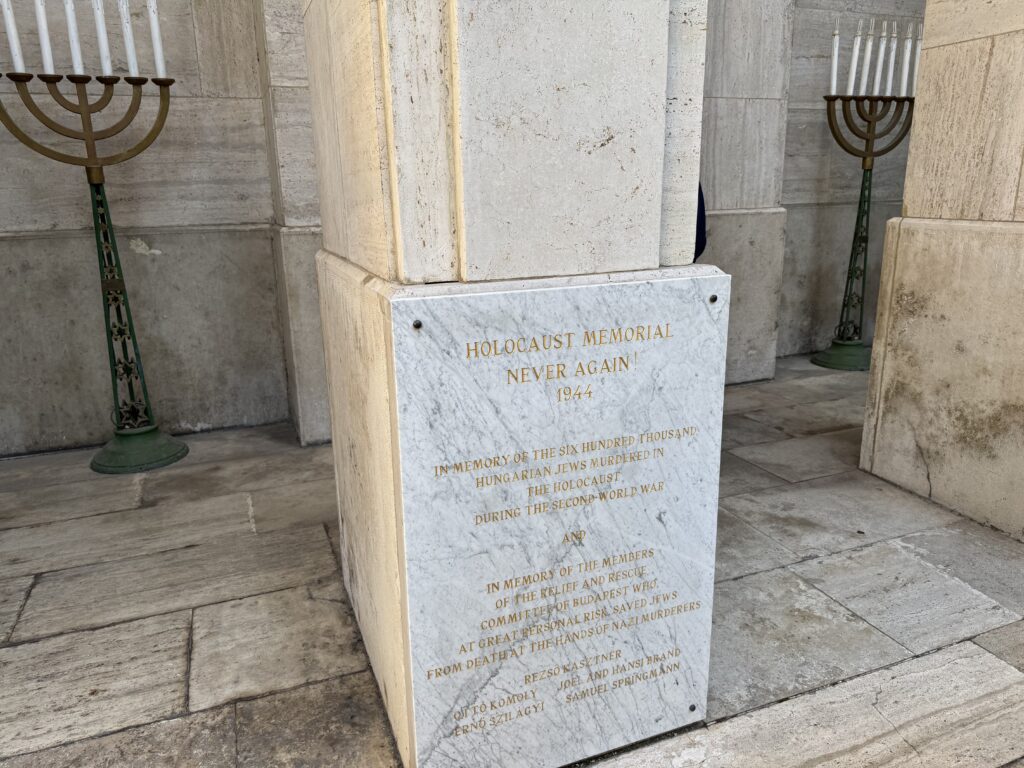
With all this incredible and strong Jewish history, it’s amazing to see how current Hungarian Prime Minister, Viktor Orbán, is leading the country. His policies have undermined democracy, weakened judicial independence and curtailed press freedom. Let this serve as a reminder to never let these atrocities happen again.
Exploring Castle Hill
On one of our afternoons in Budapest, Nik and I along with our friends Luke and Monica, took the Budapest Funicular (incline) up to Castle Hill. It was a quick ride up (and again a quick ride down.)
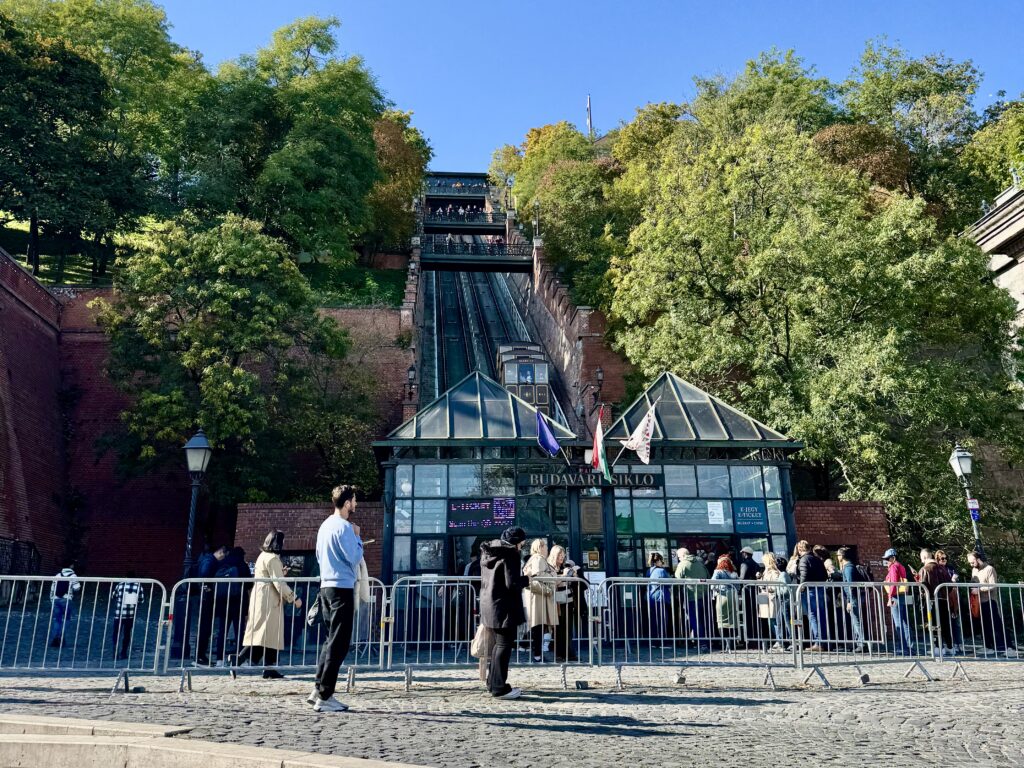
The funicular opened in 1849, got destroyed during World War II and re-opened in 1986 along its original track, with most of its original design.
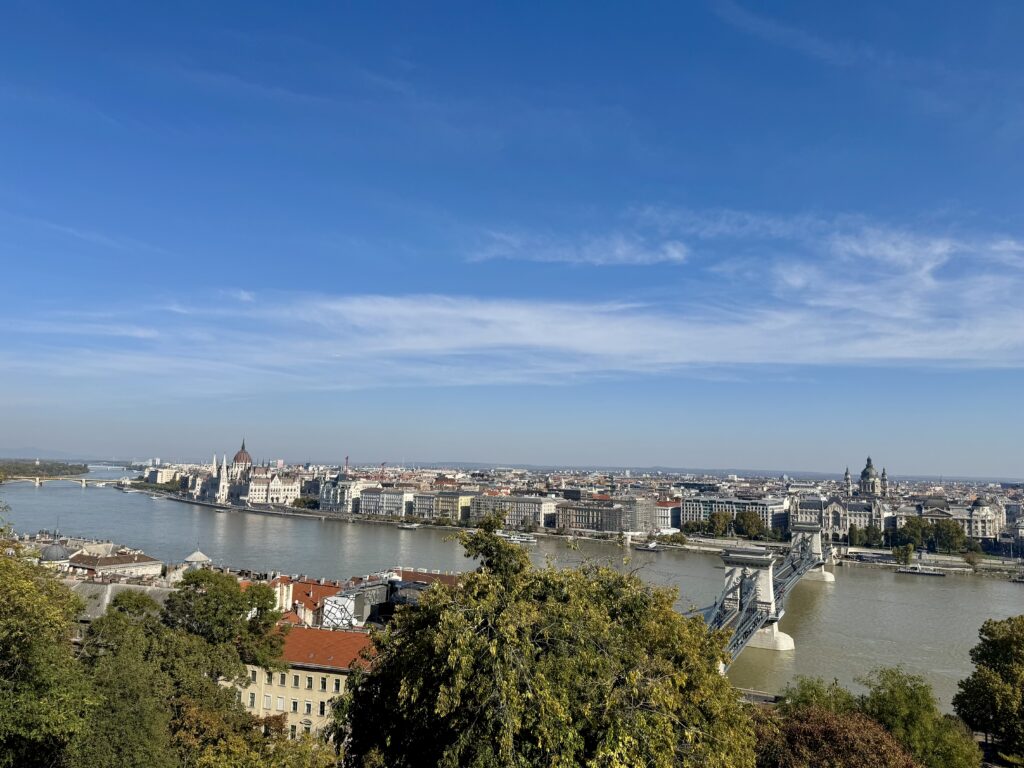
In addition to some great views, atop the hill are several key city attractions including Buda Castle. The former palace is now home to the Hungarian National Gallery and Budapest History Museum.
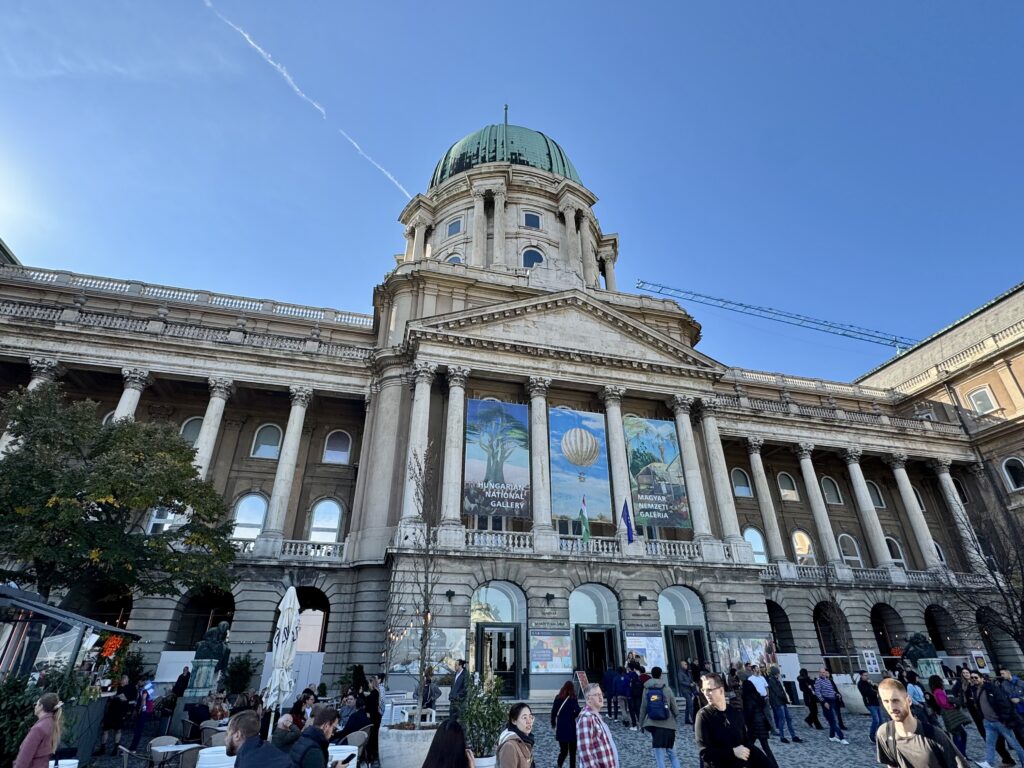
The Palace layout is pretty expansive and the old architecture is gorgeous.
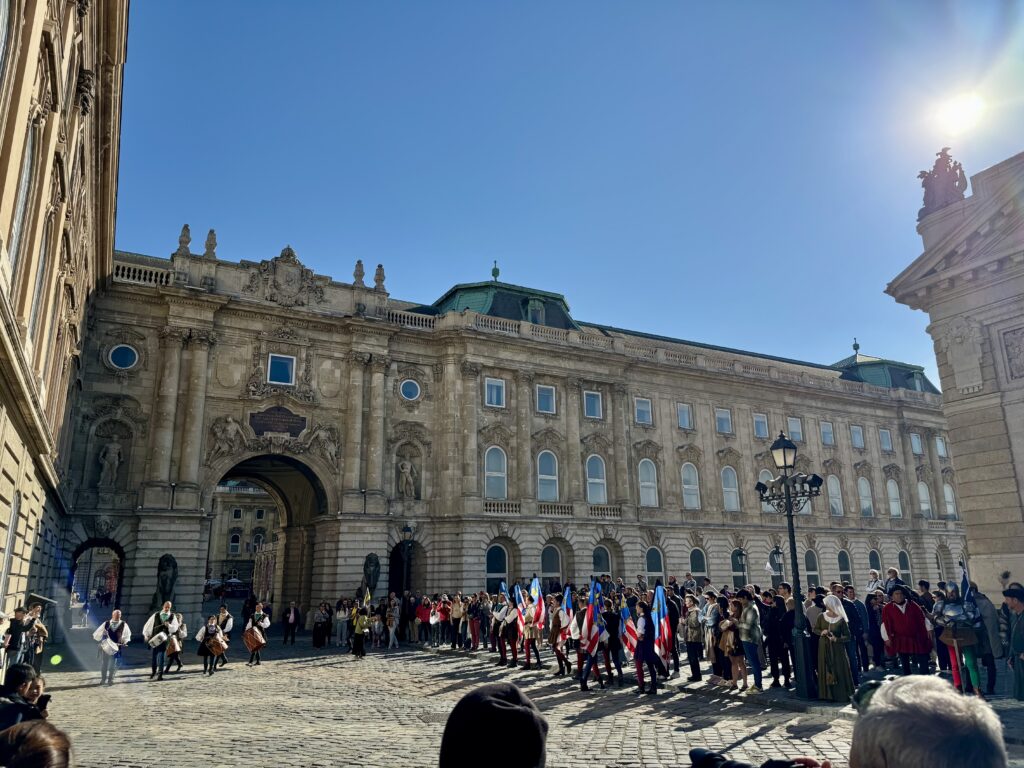
Matthias Church was originally built in Romanesque style in 1015, although not much proof from that time exists. The current building was constructed in the Gothic style and has been well maintained as the exterior looks freshly cleaned.
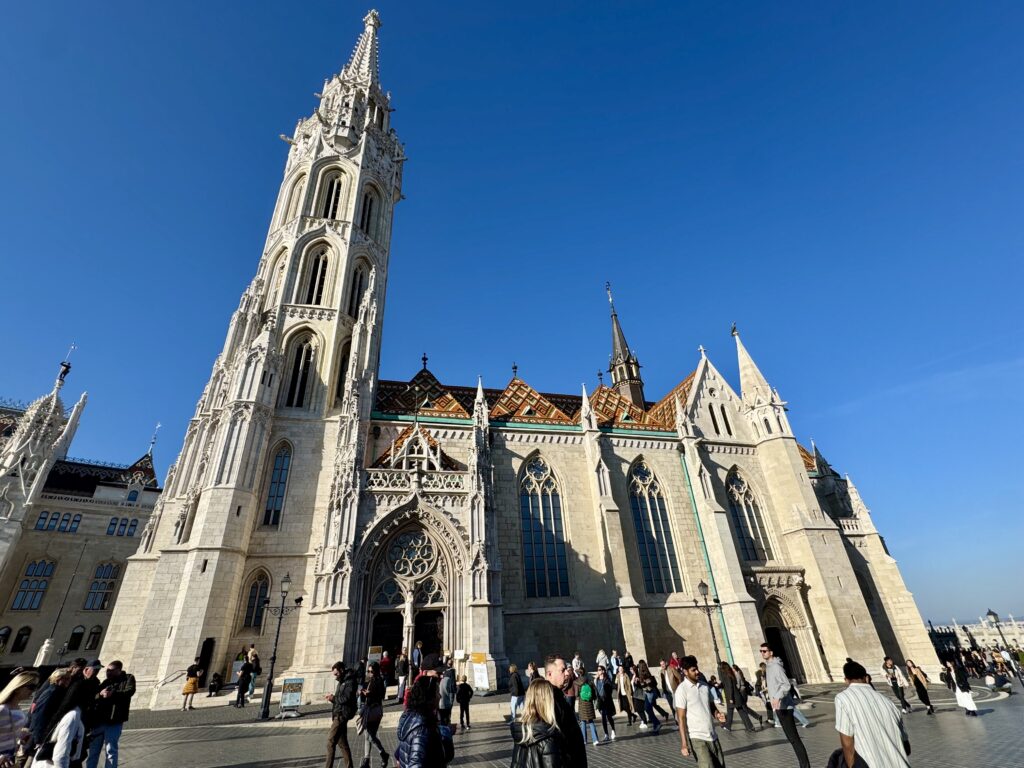
History says Fisherman’s Bastion was originally formed as part of a fortification and this part of the wall was protected by the guild of fishermen (who lived below) during the Middle Ages.
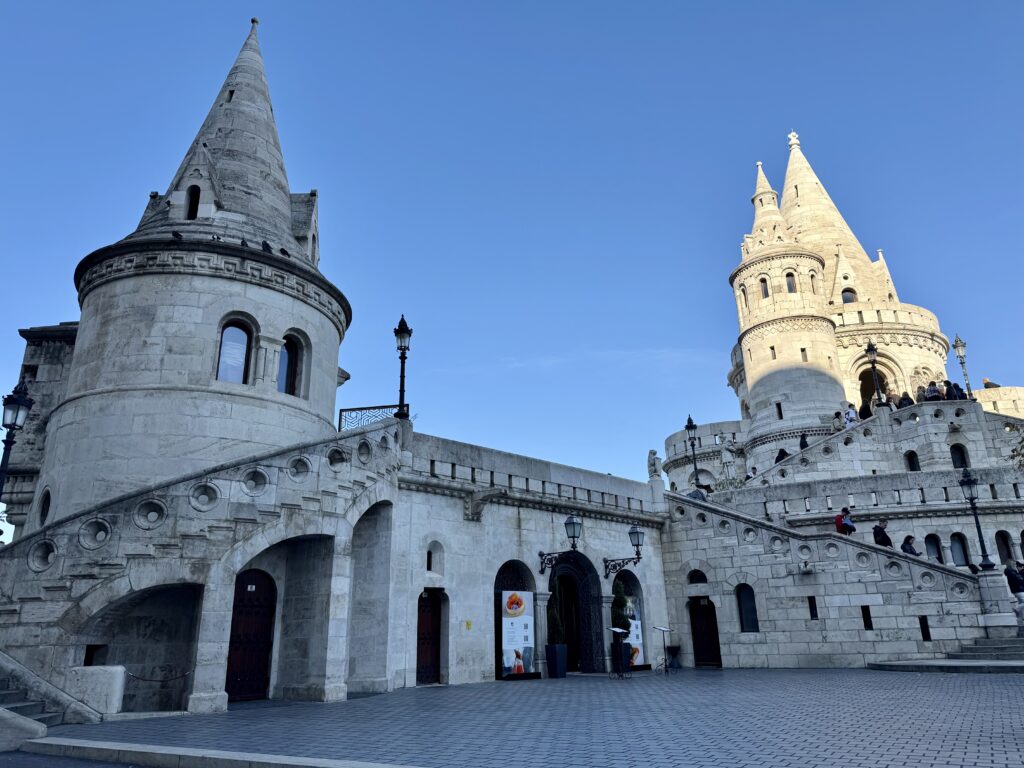
We really got lucky with a sunny day, making it enjoyable to walk around.
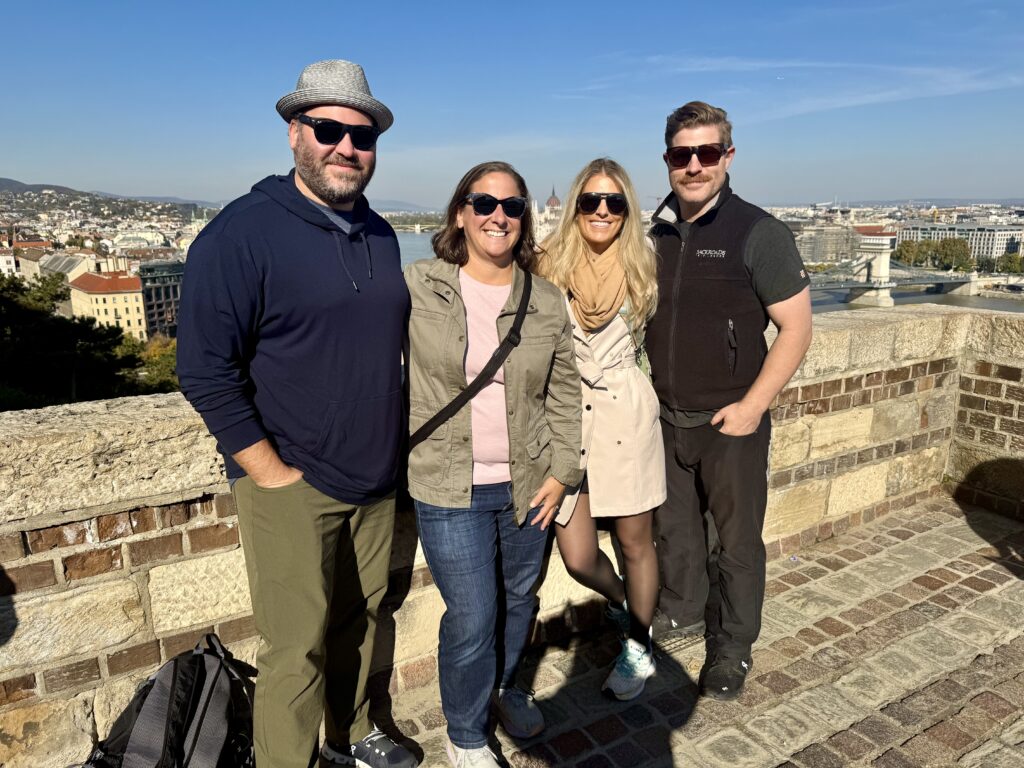
Hungarian State Opera House
I love seeing the Opera houses in Europe. The Hungarian State Opera House architecture details in the close-up are so impressive.
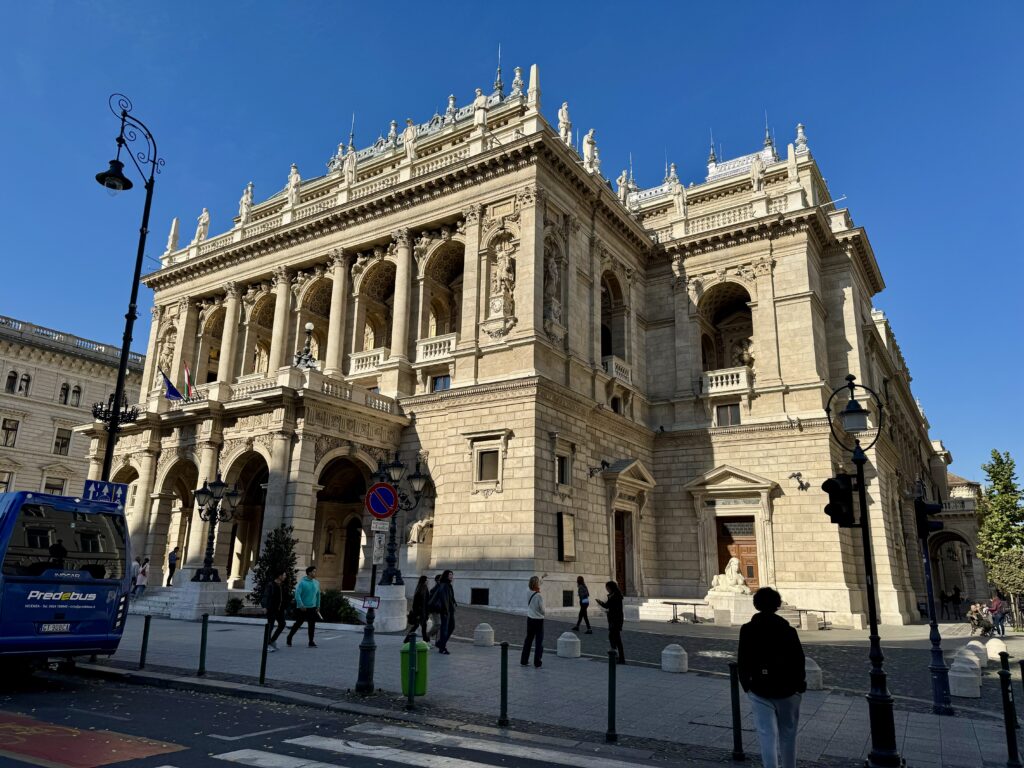
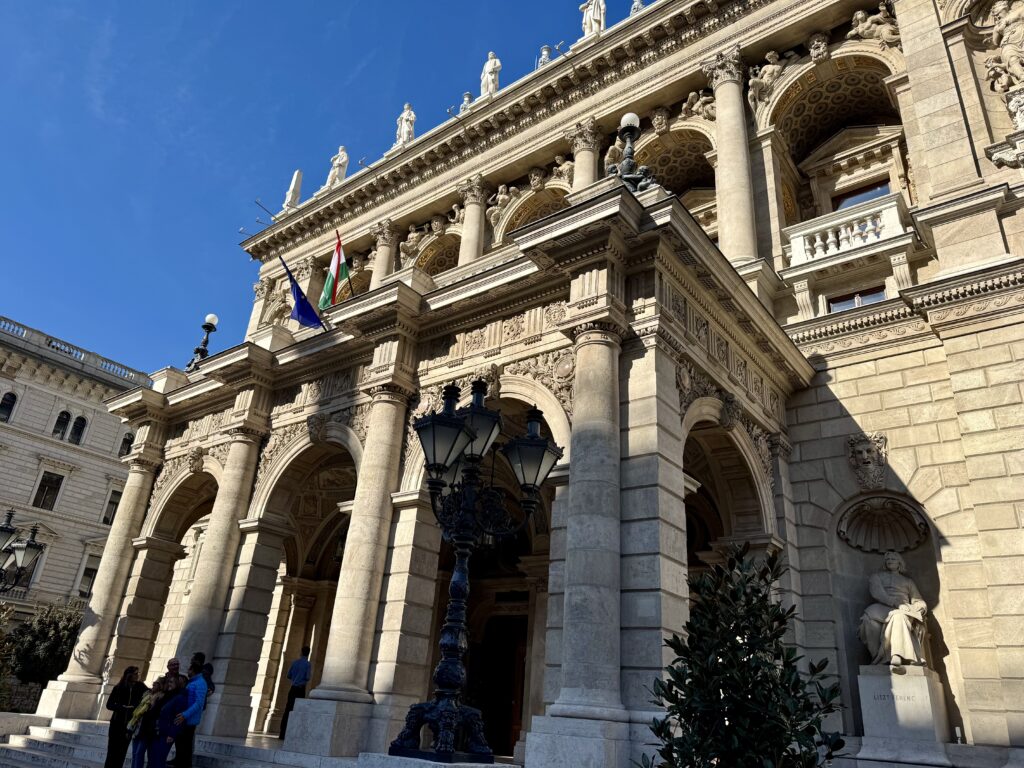
We popped our heads into the lobby and just a stunning building, both inside and out.
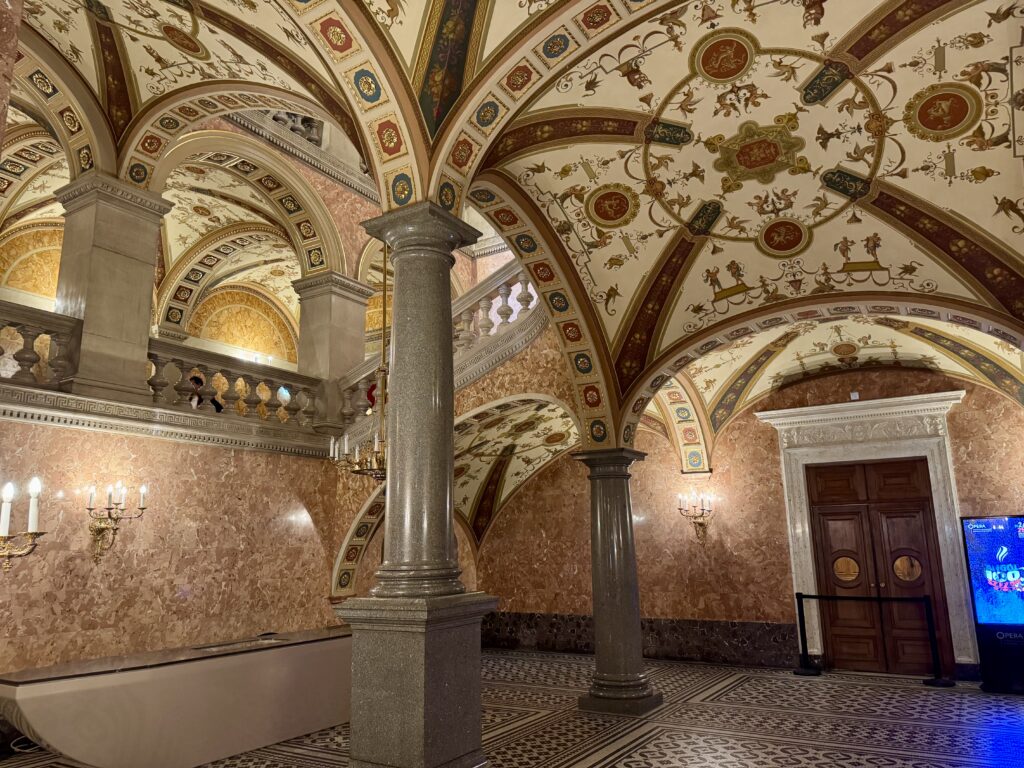
Until Next Time, Budapest
This wraps up four days in Budapest. I cannot express how wonderful the city is. If you missed it, I wrote about the delicious food we enjoyed during the trip. If you ever take a trip here don’t overlook Budapest’s Jewish history. It’s moving and informative.
